
MINING IN AFRICA NEW RISKS BRING NEW OPPORTUNITIES Updates on Quebec plan for critical and strategic minerals Canadian roadmap to net-zero DECEMBER 2022 | www.canadianminingjournal.com | PM # 40069240 +

Compact Mining Trailers Operates for less. Side dumps offer a compact footprint with lower operating costs From mines to quarries, SmithCo side dump mining trailers offer a smarter way to haul. These trailers can go the distance with payloads up to 100 tons and 200 tons when trained. Haul material more efficiently over distance than traditional haul trucks, making satellite mines more feasible. Dump over barriers, berms or into crusher chutes. Versatile SmithCo Side Dump Trailers will work for you. 800-779-8099 sales@sidedump.com
Rugged
FEATURES
ESG
Using a regeneration lens, mine waste becomes a resource.
Sustainable mine design starts with a cultural shift.
TECHNOLOGY
Mines of the future will run on data. MINING IN CANADA AND NORTH AMERICA
Updates on Quebec plan for critical and strategic minerals.
Opportunities for mining and critical minerals’ processing in North America.
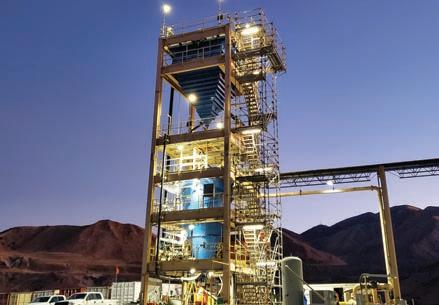
Roadmap to net-zero.
Strong team: successful project.
Seabridge Gold: a Canadian icon of responsible operations.
ABB
12 LEARNINGS
Top 12 learnings mined from a year of all-electric and zero-emission exploration.
INDIGENOUS PEOPLES
Constructing lasting partnerships: team of Indigenous and non-Indigenous companies join forces on Giant mine remediation.
GREEN
ENERGY
New power integration center offers productivity and sustainability solutions.
MINING IN AFRICA
Mining in Mozambique: new risks bring new opportunities.
EQUIPMENT
Increasing efficiency with support equipment.
DEPARTMENTS
NEWS | Updates from across the mining ecosystem.
LAW | It is in the budget: new measures for mining companies and a new super flow-through financing tax credit for investors.
YEAR IN REVIEW | A year in review from EY center of excellence advisors.
ON THE MOVE | Tracking executive, management, and board changes in Canada’s mining sector.

Coming in January 2022 Canadian Mining Journal’s January issue will look at all aspects of water management from tailings ponds, conservation and coping with the scarcity of water in certain locations.
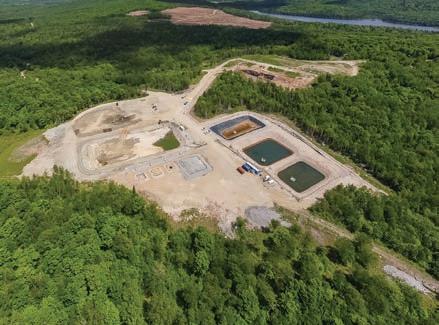
For More Information
Please visit www.canadianminingjournal.com for regular updates on what’s happening with Canadian mining companies and their personnel both here and abroad. A digital version of the magazine is also available at https://www.canadianminingjournal.com/digital-edition/

16
DECEMBER VOL. 143, N O .10
Front cover image provided by Petro-Canada Lubricants www.canadianminingjournal.com
18
10
20
14
16
18
32
37
38
24
26
28
30
35
4
6
DECEMBER 2022 CANADIAN MINING JOURNAL | 3 38
EDITORIAL | Critical mining was the highlight of 2022.
FAST
8
13
45
FROM
DECEMBER 2022 Vol. 143 – No . 10
225 Duncan Mill Rd. Suite 320, Toronto, Ontario M3B 3K9
Tel. (416) 510-6789 Fax (416) 510-5138 www.canadianminingjournal.com
Editor in Chief Dr. Tamer Elbokl TElbokl@CanadianMiningJournal.com

Tamer Elbokl, PhD
W
Developed in consultation with provincial, territorial, and industry experts, Canada now has a list of minerals it considers to be “critical.” Currently, it consists of 31 min erals; however, the list will be reviewed every three years and revised if needed.
Most recently, Canada strengthened its guidelines to protect its “critical mining” sector from foreign state-owned enterprises. The announcement of approximately $4.0 billion in support over eight years to implement its first critical minerals strat egy together with the federal government’s announcement for divesting owner ship of some Canadian mining companies held by foreign state-owned companies are both part of this trend.
In March 2022, the government of Ontario announced its first-ever critical minerals strategy, which aims to secure Ontario’s position as a global leader of responsibly sourced critical min erals. Turn over to page 8 where our law column discusses the new measures in the federal budget 2022 for mining companies and the new super flow-through financing tax credit for investors.
The next 12 months are expected to be chal lenging when it comes to inflation and supply chain constraints. Building eco nomic development opportunities with Indigenous partners and developing a skilled labour force should continue to be a priority, readers can get insight into a year in review from EY center of excellence advisors and Max Luedtke from ABB industries on pages 13 and 24, respectively.
We also shed some light on Quebec plan for critical and strategic minerals on page 16. Additionally, this issue features articles on mining in North America including two interviews with the CEOs of “responsible” Canadian mining compa nies on pages 32 and 38. Gordon Feller’s article about mining in Mozambique is on page 30.
Finally, as part of our ongoing discussion on rebranding mining, it is time to start using the term “critical mining” to refer to the mining of those critical miner als. Our readers are cordially invited to weigh in about the use of this term by sending letters to the editor at TElbokl@canadianminingjournal.com. CMJ
News Editor
Marilyn Scales mscales@canadianminingjournal.com editor@canadianaminingjournal.com
hile the world recovers from the Covid-19 pandemic, the year 2022 has been a good year for the “critical mining” sector in Canada supported by several announcements by the federal and provincial governments.Production Manager
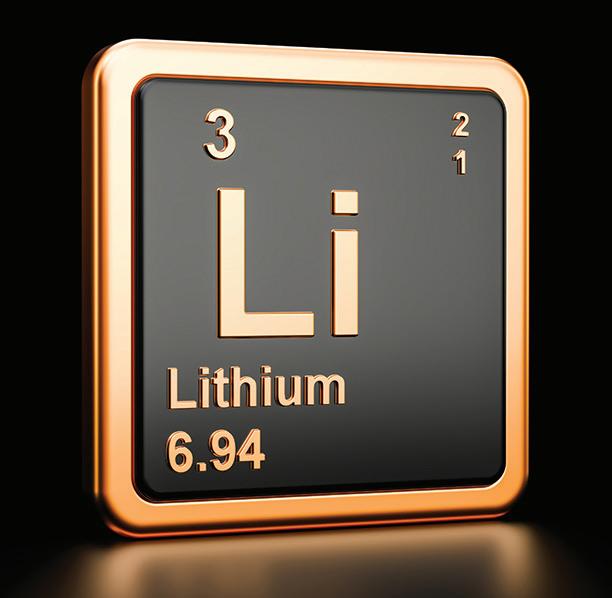
Jessica Jubb jjubb@glacierbizinfo.com
Advisory Board
David Brown (Golder Associates) Michael Fox (Indigenous Community Engagement) Scott Hayne (Redpath Canada) Gary Poxleitner (SRK)
Manager of Product Distribution Allison Mein 403-209-3515 amein@glacierrig.com

Publisher & Sales Robert Seagraves 416-510-6891 rseagraves@canadianminingjournal.com
Sales, Western Canada
George Agelopoulos 416-510-5104 gagelopoulos@northernminer.com
Toll Free Canada & U.S.A.: 1-888-502-3456 ext 2 or 43734
Circulation Toll Free Canada & U.S.A.: 1-888-502-3456 ext 3
Established 1882
Canadian Mining Journal provides articles and information of practical use to those who work in the technical, administrative and supervisory aspects of exploration, mining and processing in the Canadian mineral exploration and mining industry. Canadian Mining Journal (ISSN 0008-4492) is published 10 times a year by Glacier Resource Innovation Group (GRIG). GRIG is located at 225 Duncan Mill Rd., Ste. 320, Toronto, ON, M3B 3K9 Phone (416) 510-6891.
Legal deposit: National Library, Ottawa. Printed in Canada. All rights reserved. The contents of this magazine are protected by copyright and may be used only for your personal non-commercial purposes. All other rights are reserved and commercial use is prohibited. To make use of any of this material you must first obtain the permission of the owner of the copyright. For further information please contact Robert Seagraves at 416-510-6891.
Subscriptions – Canada: $51.95 per year; $81.50 for two years. USA: US$64.95 per year. Foreign: US$77.95 per year. Single copies: Canada $10; USA and foreign: US$10. Canadian subscribers must add HST and Provincial tax where necessary. HST registration # 809744071RT001.
From time to time we make our subscription list available to select companies and organizations whose product or service may interest you. If you do not wish your contact information to be made available, please contact us via one of the following methods:
Phone: 1-888-502-3456 ext 3; E-mail: amein@glacierrig.com
Mail to: Allison Mein, 225 Duncan Mill Rd., Ste 320, Toronto, ON M3B 3K9
We acknowledge the financial support of the Government of Canada.
CREDIT: ADOBE
4 | CANADIAN MINING JOURNAL www.canadianminingjournal.com
President, The Northern Miner Group Anthony Vaccaro THE EDITOR
Critical mining was the highlight of 2022
OUR COMMITMENT RUNS DEEP
CAT® UNDERGROUND HARD ROCK MINING
Underground hard rock mining presents special challenges when it comes to safe, efficient, productive operation from environmental concerns and rising costs to communications and connectivity challenges. Cat ® underground loaders and trucks are designed to help you meet those challenges head-on.
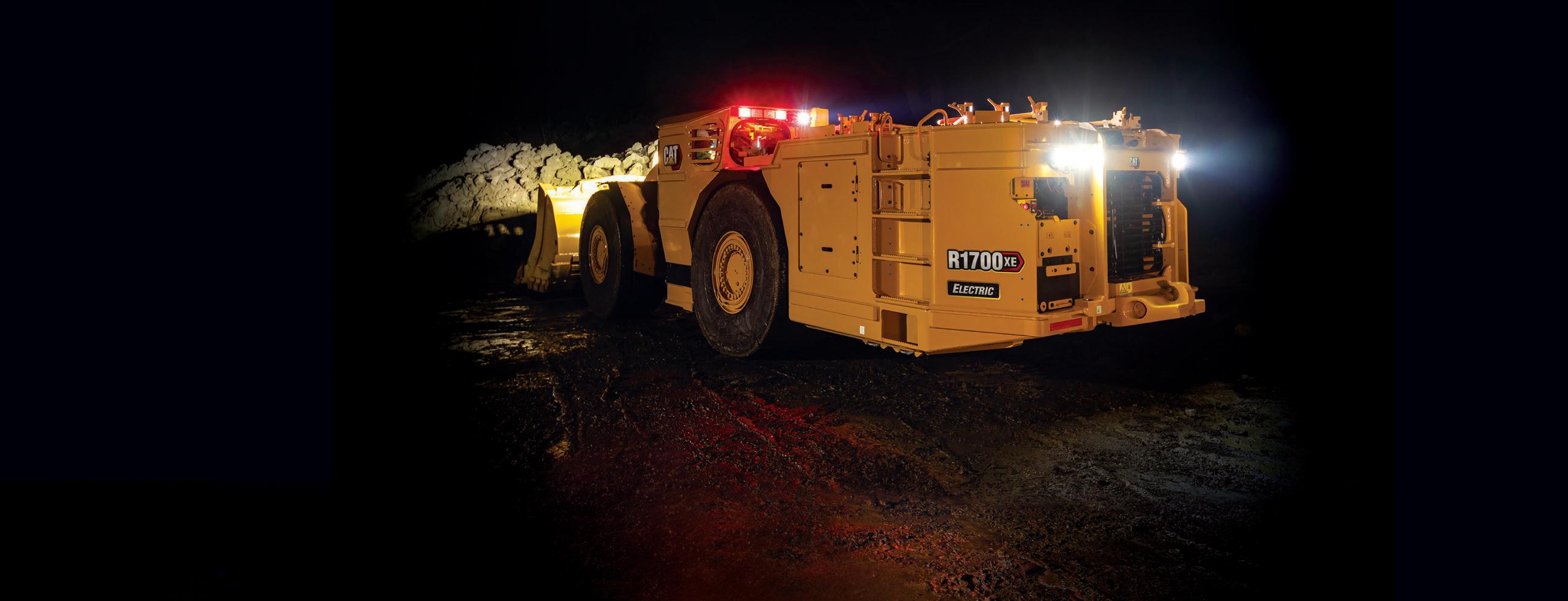
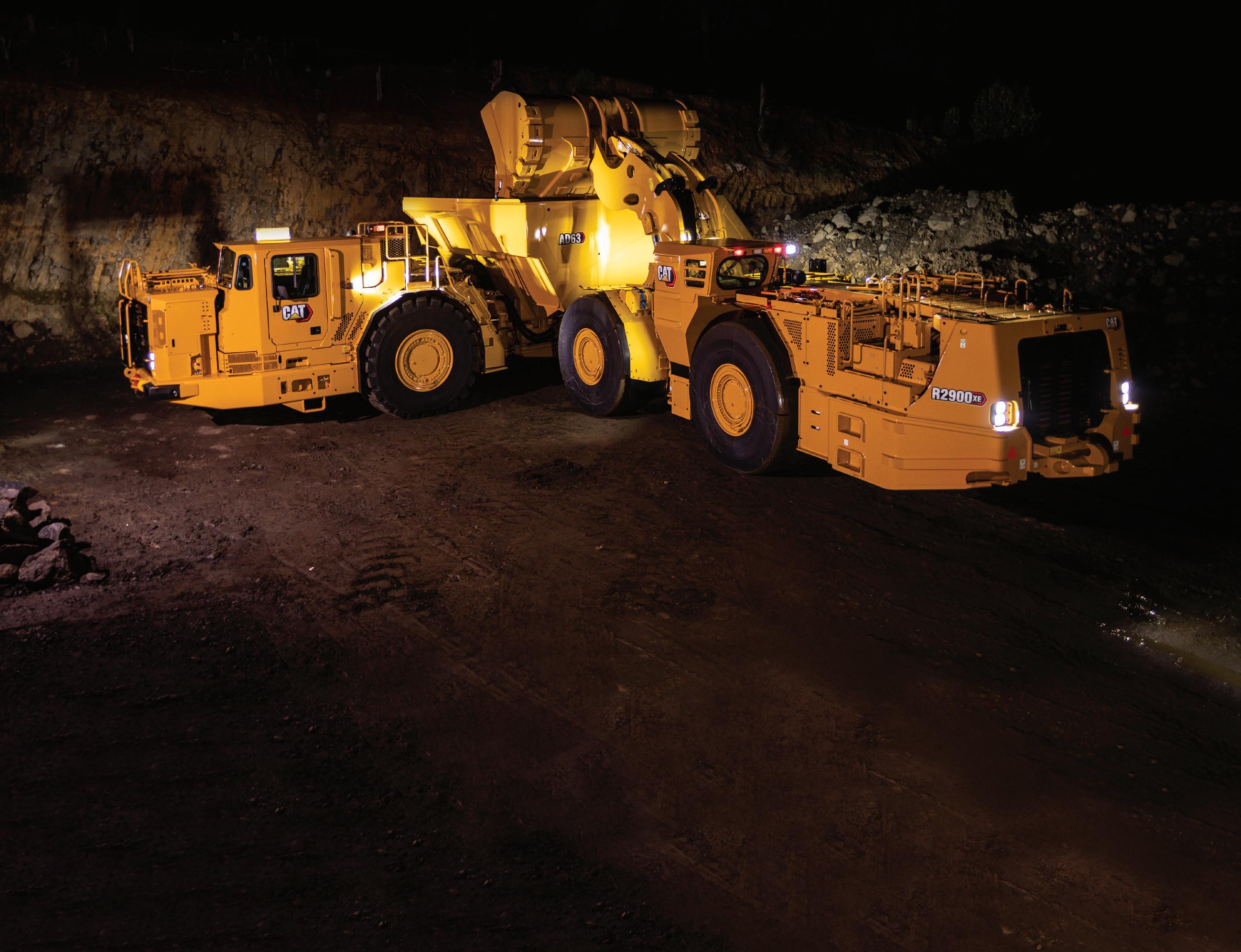
We recently introduced our first zero emissions battery-electric machine, the R1700 XE underground loader, and a new AD63 underground truck that delivers high payload and can be configured to meet the strictest emissions regulations. And we’ll soon be launching a new diesel-electric R2900 XE built from the ground up for increased production and reduced emissions.
At Caterpillar, we never stop looking for new ways to innovate and optimize. We’re committed to listening to your challenges and collaborating with you to find new ways to improve the way you mine.
CAT.COM/UNDERGROUND

All Rights Reserved. CAT, CATERPILLAR, LET’S DO THE WORK, their respective logos, “Caterpillar
the “Power Edge” and Cat “Modern Hex” trade dress as well as corporate and product identity used herein, are trademarks of
and may not be used without permission.
©2022 Caterpillar.
Corporate Yellow”,
Caterpillar
• ENVIRONMENT
|
Updates from across the mining ecosystem
Newmont to spend $160M on water treatment plant at Porcupine
On Nov. 18, NEWMONT is mak ing a $160-million investment into a new, state-of-the-art water treatment plant at its Porcupine operations near Timmins, Ont.
The water plant is to be com pleted by the end of this year and become operational in 2023. It will return up to 13 mil lion m3 of treated, clean water to the Mattagami, Frederick house, and Upper Kapuskasing watersheds.
“Investments like the new water treatment plant that we are announcing today are only made possible by the steadfast commitments of our employees, all levels of government and our Indigenous communities and partners,” said Porcupine general manager Dawid Pretorius at the official announce ment. “I would like to thank all involved for their dedication to upholding our reputation as an industry leader in safe, sustain able and responsible mining.”
Since 1910, the Porcupine mining district has produced more
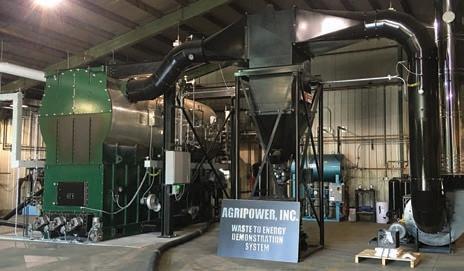
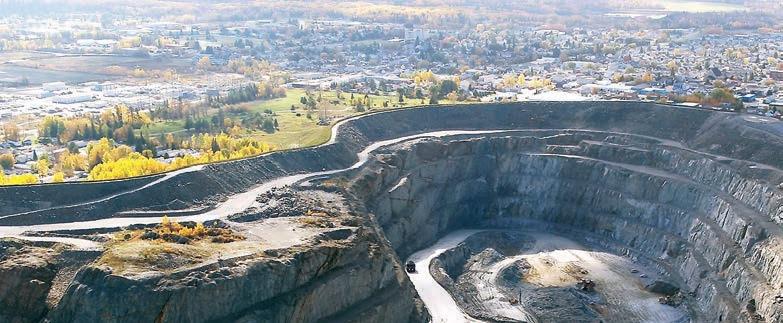
DECARBONIZE
Mine Sites and
on Energy

than 67 million oz. of gold. Newmont produces about 287,000 oz. of gold from its Porcupine mines in 2021. Proven and prob able reserves at the end of last year contained 6.2 million oz. gold in 42.8 million tonnes grading 1.89 g/t gold. The company is now the largest employer in Timmins, providing more than 1,200 jobs for employees and contractors.
The official announcement was attended by Ontario Premier Doug Ford, MPP for Timmins and Minister of Mines George Pirie, Newmont senior VP for North America, representatives of many nearby Indigenous nations, and local dignitaries.
| Sayona to expand NAL resources, production capacity
SAYONA MINING is making potential plans to increase the resources at its North American Lithium (NAL) project in La Corne, Que., with the acquisition from Jourdan Resources of the Vallée lithium project.
Sayona says this is a strategic acquisition which will posi tion the company to quickly expand resources and plan for increased production capacity. The newly acquired claims host pegmatite targets located close to and along strike for the NAL orebody.
Sayona will acquire 48 claims spanning about 1,997 ha, located adjacent to the NAL operation. Twenty of the leases are located within 500 metres of the mine boundary. The orig inal NAL property covers 19 claims over 582 hectares.
Twenty claims or 755.3 ha will be acquired outright, which will allow an immediate extension to the NAL operating area for future expansion. Sayona also has the right to earn up to a 51% stake in the remaining 28 claims by spending $4.0 million within a year and a further $6.0 million over two years at the property, raising its interest to 50%. The final 1% equity is available is Sayona prepares a feasibility study and arranges funding for mine development at Vallée.
Sayona will also acquire at 9.99% shareholding in Jourdan through a private placement of $1.5 million. The two compa nies plan to form a joint venture to develop Vallée. CMJ
6 | CANADIAN MINING JOURNAL www.canadianminingjournal.com
FAST NEWS
The Porcupine Hollinger gold mine in northern Ontario. CREDIT: NEWMONT
• LITHIUM
CMJ
Your
Save
The AgriPower clean safe Biomass and Waste-to-Energy Systems will be uniquely designed to provide the Electricity and Heat required at your Mine Sites across Canada and around the World. The AgriPower units are fueled by the mine’s waste of paper, cardboard, and wood of all types, some plastics, and biomass from dead-dying trees in the area. WE CAN PROVIDE PROJECT GREEN FUNDING. CONTACT: Garry Spence 1-519-631-6035 garryevergreenenergy@rogers.com
U.S. military may assess Canada critical minerals projects for funding
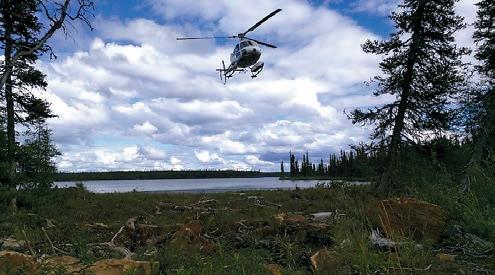










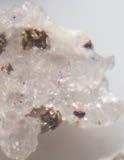
Canadian battery mineral miners and explorers are sniffing around hundreds of millions of dollars in potential funding from the United States military, but there are no firm deals yet to take advantage of an alliance dating back to World War II.



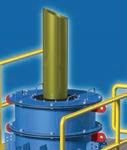
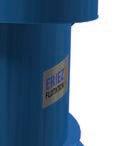


The concept of the U.S. funding projects in Canada to help sidestep China’s control over lithium and rare earth element (REE) processing broke into the open this month at a confer ence in Washington, D.C. However, some companies say they’ve been aware of the initiative for years.




























There appears to be a new urgency under the Biden admin istration as it says it faces looming threats from China to national security through minerals needed for green energy and the wider economy. In March, it used the 1950 Defense Production Act (DPA) Title III to give the Department of Defense increased powers to help miners and explorers secure supplies of battery minerals such as lithium, nickel, cobalt, graphite and manganese. They’re also seeking REEs used in much modern technology, from weapons to mobile phones.


The DPA has US$750 million to fund projects after measures approved in a law passed in August for tax breaks on electric vehicles made in North America, and a Ukraine aid package in May. CMJ








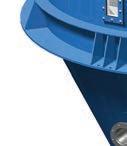








DECEMBER 2022 CANADIAN MINING JOURNAL | 7
Mineral:
Particle Size: 800 x 150µm Mineral Expression: 1% of Surface Area Copper Recovery: >90% Coarse Particle Flotation... this changes everything. Call
or visit
for technical
to arrange
testing, or
>600µm particles recovered using HydroFloat CPF •Grind coarser at same recovery •Reduce coarse values lost to tailings •Increase throughput •Reduce primar y grinding power consumption •Generate coarser tailings
CRITICAL
|
The U.S. military has set aside funding that could possibly propel Canadian critical minerals projects. . CREDIT: COMMERCE RESOURCES
Chalcopyrite
1.604.952.2300
EriezFlotation.com
papers,
lab/pilot
complete flowsheet development.
•
MINERALS
Make sure to send your press releases to: editor@canadianminingjournal.com
By Michael Sabusco, Emmanuel Sala, and Matthew Imrie
It is in the budget: new measures for mining companies and a new super flow-through financing tax credit for investors
On April 7, 2022, the federal government of Canada delivered Budget 2022 (federal budget). As part of the government’s push for economic growth in areas like clean technology, health care, aerospace, and computing, industries in which crit ical minerals play an essential role, the federal budget proposes to provide up to $3.8 billion in support over eight years to imple ment Canada’s first critical minerals strategy, and introduces a new “super flow-through” 30% critical mineral exploration tax credit (CMETC) aimed at increasing investment for certain min ing companies exploring for specified critical minerals.

On Aug. 9, 2022, the department of finance released draft legislation to implement the CMETC, and on Nov. 3, 2022, in its fall economic statement, the federal government reiterated its commitment regarding the critical minerals’ strategy and CMETC.
The CMETC is a new 30% tax credit for specified mineral exploration expenses incurred in Canada and renounced to investors in flow-through shares (FTS) as part of FTS agree ments entered after April 7, 2022, and on or before March 31, 2027. It applies to certain exploration expenditures targeted at nickel, lithium, cobalt, graphite, copper, rare earth elements, vanadium, tellurium, gallium, scandium, titanium, magnesium, zinc, platinum group metals, or uranium, which tend to be used in solar panels, batteries, permanent magnets and other elec tric vehicle components (i.e., critical minerals).
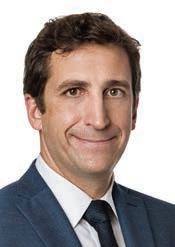
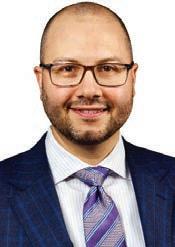
This CMETC is a new tax incentive to be added to the existing federal FTS regime under the Income Tax Act (Canada), which already allows certain investors to benefit from (i) a deduction of 100% of the qualifying resource exploration expenditures renounced by an eligible corporation in its favour; and (ii) in certain cases, an additional 15% tax credit (15% federal tax credit) for individuals on certain grassroots qualifying resource exploration expenditures.
The new 30% CMETC follows the current rules for the 15% federal tax credit but applies only to projects targeting critical minerals. Taxpayers cannot claim both the 15% federal tax credit and the 30% CMETC with respect to the same qualifying
resource expenditure, and the 15% federal tax credit cannot be used as a “fallback” option.
To qualify for the 30% CMETC, a “qualified engineer or geo scientist” must certify that the expenditures will be incurred pursuant to an exploration plan that primarily targets critical minerals (i.e., targets deposits containing more than 50% criti cal minerals). The CMETC certification must be made in a pre scribed form up to 12 months before the time the FTS agree ment is entered into.
The Canada Revenue Agency (CRA) has not yet released the CMETC certification prescribed form, even though eligible issu ers have been able to enter FTS agreements targeting critical minerals since April 7, 2022. In the meantime, with respect to CMETC certifications made in advance of the prescribed form being released, the CRA will accept a letter signed by the “qual ified engineer or geoscientist” that includes certain informa tion, such as why it is expected that the mineral deposit(s) being explored will primarily contain critical minerals.
According to CRA guidance, issuers should keep in their records (in case requested by CRA) documents that support the certification, such as claim outline(s) and number(s), descrip tions of geological features of the property(ies), and proposed exploration activity(ies) and how they relate to the targeted critical minerals, as well as copies of exploration plan(s).
The introduction of the critical minerals’ strategy and the CMETC are anticipated to be a welcome relief for many mineral exploration companies in Canada, and an exciting opportunity for other market participants. Specifically, we expect that some of the benefits will include the following:
> Increasing interest in the Canadian critical minerals space. A recent World Bank Group report finds that the production of critical minerals could increase by 500% by 2050 to meet the surging demand for clean energy. We think that Canada, being recognized as a leading mining nation with enormous potential for discovery of mineral resources, is well-positioned to benefit from a rise in global demand for critical minerals, and that the
8 | CANADIAN MINING JOURNAL www.canadianminingjournal.com
LAW
introduction of the CMETC will enable it to become a more attractive destination for critical minerals investment.
> Assisting companies advance exploration projects. The government’s financial commitment to the critical minerals’ strategy and introduction of the CMETC should assist explora tion companies in securing funding for critical minerals proj ects, and thereby reduce part of the risk profile associated with such early-stage projects. We think that these new measures may also prompt certain mining companies to reconsider their current focus and evaluate making changes, where possible, towards qualified resources with potential for critical minerals. In a working paper published in October 2021, the International Monetary Fund noted that it expects global demand for copper, nickel, cobalt, and lithium to increase over the next 20 years, with significant increases expected in both prices and demand in the event we transition to net-zero CO2 emissions in 2050, another trend we expect will assist in the advancement of proj ects with potential for critical minerals.
> Encouraging capital-raising activities. We expect to see a renewed interest and increase in FTS financings by Canadian issuers exploring for critical minerals. With the new CMETC dou bling the tax credit rate of the existing credit, the break-even point for investors is reduced significantly. The timing of the CMETC also coincides with recent new prospectus exemptions, aimed at providing a more efficient method for issuers listed on a Canadian stock exchange to raise capital from a broader base
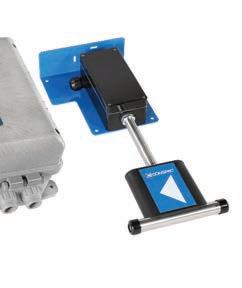
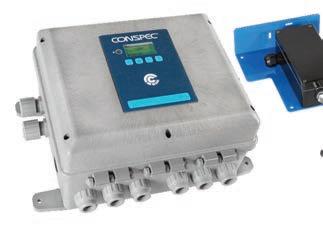

of eligible investors, which could be a way for a broader group of investors to participate directly in these tax-efficient invest ments which have traditionally been available only to certain eli gible investors (typically “accredited investors”).
> Stimulating alternative investment vehicles. Flow-through funds play a significant role in the junior mining industry, rais ing significant amounts of capital for deployment to explora tion companies and providing investors with income tax sav ings via a deduction of 100% of the amount invested in the fund, as well as indirect exposure to a diversified portfolio of FTS acquired by the fund over time. Given the increased inter est in critical minerals exploration, the improved income tax incentives, and the anticipated uptick in flow-through financ ings by critical minerals mining companies, we also expect to see an uptick in the aggregate amount of capital raised by flowthrough funds, that will be deployed to critical minerals mining companies, while the CMETC is available.
For further information and insight on the topics discussed in this article, please refer to the Dentons Insight published by the authors and available at https://www.dentonsmininglaw.com/ CMJ
MICHAEL SABUSCO is a partner at Dentons Canada and practices in the corporate, securities, and M&A groups. He is also the Ontario lead for the firm’s national mining committee.
EMMANUEL SALA is a partner at Dentons Canada and practices in the corporate and tax groups. He is also the Québec lead for the firm’s national mining committee.
MATTHEW IMRIE is a senior associate in Dentons Canada’s corporate group.
DECEMBER 2022 CANADIAN MINING JOURNAL | 9
Using a regeneration lens, mine waste becomes a resource
Regeneration of previously mined sites presents opportunities to turn waste into a resource, create nature-based solutions and better closure outcomes. Waste from past mining contains met als like cobalt, lithium, copper, platinum, and tellurium. This mine waste can help fuel the energy transition and meet the responsible sourcing requirements of green tech and sustainable brands.
Leaders in industry, government, and civil society can now view impacted, brownfield sites differently. Not just as tailings, waste rock, and wastewater to be managed for risk, but as a potential source of metals and an opportunity for nature-based solutions; whether sites are abandoned, closed, and held as lia bilities by operating companies, or active operations.
There are three reasons the time is right to re-think mining waste and mine sites: 1 Demand linked to the energy transition. The World Bank projects that we will need over 3.0 billion tonnes of min erals and metals to deploy the wind, solar, and geothermal power, as well as energy storage, required to achieve a climate target of less than a 2°C increase.
2 Technology innovation. Innovation in mine waste processing is exploding, both tested and new technologies can be used to re-mine waste and address pollution.
3 The need to find more land for naturebased solutions to meet our biodiver sity and climate goals. The benefits that can accrue from restoring degraded sites is significant; we can create quanti fiable, green outcomes in the form of biodiversity and carbon credits.
New business models that put community first
In November 2021, we launched Regen eration, a start-up focused on re-mining and restoration, to seize this opportunity and put community first. To be success ful, re-mining projects will need to prove themselves commercially and, in addi tion to permits, they’ll need a community license to operate.
Because many of these brownfield sites are in areas that have experienced nega tive impacts from past mining activities, we see an opportunity to reset and improve community relationships. In this context, new business models, especially those that depend on both a community
and commercial bottom-line, are an asset. As a public benefit company, Regeneration is an example of such a model, the com pany itself is part of the innovation.
We blend NGO and commercial think ing, and we draw on experts from both sectors. We have a community and a commercial bottom line. We form inno vative partnerships with community organizations and businesses. We link upstream sites to downstream brands and consumers.

When we are assessing potential Regen eration sites, we focus first on restoration outcomes. When we identify a restoration opportunity, we then work together with the community to build a closure vision. With this approach, re-mining is a means to better community, conservation, and climate outcomes.
Our social impact business model can constructively disrupt the status quo, addressing liability risk and using reve nue generated from re-mining and other sources to support restoration and pro vide community benefits. While a pure commercial actor may require a corpo rate driven rate of return, we can proceed with a site if the total restoration and
10 | CANADIAN MINING JOURNAL www.canadianminingjournal.com
By Stephen D’Esposito
ESG
CREDIT: DEEMERWHA STUDIO/ADOBE IMAGES
The time is right to transform legacy sites into ecological assets while producing critical minerals
re-mining potential pencils out, in some cases it may simply need to break even.
The Salmon Gold precedent
Before we launched Regeneration, we tested this model on a smaller scale with placer mining in Alaska and the Yukon. Based on this experience, Resolve (Regen eration’s sister NGO), launched Salmon Gold (a project to put biodiversity posi tive gold in the supply chains of Apple and Tiffany by re-mining placer tailings and restoring stream habitat for salmon and other anadromous species). Apple & Tiffany kick-started the project with ini tial funding for Resolve to develop the business model, scout and assess the sites, and help fund restoration at the first projects. They purchased Salmon Gold which is now in their products. We worked together to tell a story in the marketplace. From this experience we know that the market wants differenti ated mineral products where possible and restoration credits.
Full value mining for a healthier industry
The past impact of mining is an issue in many communities and the trend is for community leaders to seek solutions to these legacy issues before new mines advance. They want new mine develop ers to address past problems and support positive restoration outcomes. This is typically outside of the commercial pur pose of mining companies seeking to develop new projects, but it’s in the DNA of Regeneration.
Where we find community, restoration and remining solutions, the industry bal ance sheet also improves, both finan cially and reputationally. In this way, Regeneration is delivering a public good.
A concept that underpins Regeneration is full value mining – the idea that when we mine, given the impact and infrastruc ture costs, we should do our best to extract everything and ensure full use of the nat ural resource. When applied to past min ing, especially at older sites, where pro cessing was less efficient, the opportuni ties that can result from thinking this way are significant. Already, we see mining majors and others, including our equity partner Rio Tinto, advancing full value mining, essentially a circular economy concept, at operating sites. As an example, Rio Tinto is producing scandium from tita nium dioxide waste streams and tellu rium as a by-product of copper produc tion in two of its operations in North America. We encourage this.
“I am really excited … that we are partnering with Resolve to develop and launch Regeneration, a start-up that will use the re-mining and processing of waste from legacy mine sites to support rehabilitation activities and restore natural environments.
Regeneration wears its name well –its purpose will be to extract valuable minerals and metals from mine tailings, waste rock and water, and to reinvest the earnings from the sale of these responsibly sourced materials to help fund habitation restoration and closure activities, including at legacy and former mine sites.”
JAKOB STAUSHOLM, CEO, RIO TINTO
Regeneration is working with several other mining companies to assess these opportunities at closed sites and active mines.
Abandoned sites are strong candidates for full value mining (and full value re-mining) too. Abandoned and orphan
sites sometimes sit stagnant due to pro hibitive liability issues. Work at aban doned sites will take policy innovation and funding creativity, but the upside is significant. Together, these sites should be an early source of new critical miner als production and nature-based solu tions. This could also benefit govern ments that are looking to showcase prog ress on 30 x 30 commitments.
A new basket of mine site products
We see a future where closed mine sites contribute to a basket of sustainable prod ucts – differentiated minerals that fuel the energy transition; biodiversity and car bon credits; site liability reduction; and restored sites that support a community’s vision for post-remining land uses and values. CMJ
Stephen D’Esposito is the founder and CEO, Regeneration. He is also the president of Resolve.
This article has two parts. In part II, we will explore Regeneration’s approach to technology, site strategies, and policy innovation.
.com

45 offices worldwide and a global network of af liates. No matter where you are in the world, chances are we’ve got your project covered.

in review from EY center of excellence advisors
By THEO YAMENGO
Whether responding to rising costs and supply chain dis ruption or navigating digital crossroads and low-carbon targets, mining and metals companies looking to get an edge on competitors need to fundamentally shift their busi ness and operating models to meet changing demand and expectations.
Those that fail to reposition themselves for an evolving future, risk falling behind in the face of a powerful energy tran sition that will drive a sector renaissance in 2023. To help pro actively plan strategies for the coming year, EY polled its Americas Mining and Metals Centre of Excellence expert advi sors and technical mining professionals to better understand what the most impactful technological or geopolitical develop ments in the mining industry were in 2022 and what should companies be focusing on in 2023.
> Patricia Jaworski, maintenance and reliability advisor

The 2020s, from both technological and geopolitical standpoints, are pushing the mining industry to streamline more than ever before; we can no longer rely on the historical, cyclical trends that we have experienced.
To capitalize on tech developments, such as using AI to inform or even dictate decisions, I recommend a “back-to-ba sics” approach. Diligently adhering to business processes must be the first step in any journey where layering technology solu tions onto practices and systems is being considered. Without it, good data does not exist. And a tech solution built on bad data will result in failure. We need the knowledge to develop and introduce cutting-edge solutions and, more importantly, we need to leverage experience to ensure that the people, pro cess, and data foundations of a business, operation, or site are ready for those solutions.
> Doug Stretton, asset management and maintenance

The Russian invasion of Ukraine was the most significant geopolitical event of 2022, disrupting markets and completely changing the agenda of most mining companies. Those impacts will be felt for years to come.
For 2023, with a potential recession looming, mining companies should be

focussed on getting their operational costs down. As the busi ness cycle turns, cashflow and prices will fluctuate. The coming recession is an opportunity for acquisition and growth, if a min ing company can drop costs and build cash. It is important to note that asset management always does well at this part of the cycle as maintenance is one of the biggest costs for mining com panies to consider.
> Joseph Ashun, asset management specialist

One of the most impactful technological developments in the mining sector was the continuing introduction of the auton omous hauling fleet. This shows early signs of approximately 15% reduction in operational cost compared to vehicles with humans behind the wheels.
While the focus should continue to be on ESG and its surrounding elements, mining companies should also focus on ensuring the basics are done well. This is with regards to safety, business processes, training and devel opment of the new “workforce.” Also, a renewed focus on inno vation will always yield dividends.
Future proofing your mining and metals organization to pre pare for transformation will require vision and sophisticated orchestration. The next 12 months are expected to be challeng ing when it comes to inflation and supply chain shortages. Having a bold vision will empower companies to streamline investments today and chart a transformation roadmap for tomorrow. CMJ
THEO YAMENGO is the EY Americas and Canada mining and metals leader. For more information, visit www.ey.com/en_ca/mining-metals.
DECEMBER 2022 CANADIAN MINING JOURNAL | 13
YEAR IN
REVIEW
A year
The next 12 months are expected to be challenging when it comes to inflation and supply chain shortages. Having a bold vision will empower companies to streamline investments today and chart a transformation roadmap for tomorrow.
By Steve Gravel
MINES OF THE FUTURE
WILL RUN ON DATA
Ibegan studying the mining supply and services sector in Sudbury, Ont., at an economic development think tank in 2010. At the time, only a handful of com panies in the regional orbit had started to design products in anticipation of har nessing data insights in the mining sector. Some early examples that caught my eye were Symboticware, Maestro Mine Venti lation (now Maestro Digital Mine), and K4 Integration’s TopVu line of solutions.
Previously, meaningful data analytics and the business insights they provide
were out of reach to most mining end users due to a host of factors, including the prevalence of analog assets within the install base that could not capture data, patchy connectivity in underground oper ations and at-surface plants, and a lack of a clear return on investment (ROI) on data-driven decision making to induce large-scale adoption. Consequently, most downstream benefits of data analysis already being enjoyed by other sectors, such as manufacturing, were not accessi ble to mining at that time.
Either organically or by design, the mining technology community realized the untapped potential in data analytics in their sector. In a quick, 10-year period, several high-tech data capture compa nies started to pop up in the ecosystem. In effect, these ruggedized, purpose-de signed and built data capture solutions began to solve mining’s data problem.

14 | CANADIAN MINING JOURNAL www.canadianminingjournal.com
TECHNOLOGY
CREDIT: CENTRE FOR SMART MINING
Above: Cambrian business developer and NSS Canada technician demo new data visualization tools underground.
So, now that there are solutions readily available to liberate data for mining companies, what do we do with it?
This is where the next, fast-moving trend in mining technology has begun to take shape: the true value of the data being expertly collected lies in the business insights they provide to decision makers. How this data is analyzed and displayed can be transformational to an operation. Now, insights related to equipment per formance, orebody and stockpile quality, plant operations, spatial and geological data, and environmental performance can be at one’s fingertips … more or less.
Many mines have implemented some form of daily and monthly reporting based on the deluge of data coming from this army of networked devices. Some mining operations are beginning to incorporate elements of machine learn ing and artificial intelligence to enhance predictive analytics and pattern recogni tion. Harnessing such next-generation technologies is currently difficult to scale beyond individual pilots and across enterprises, but such fits and starts are a necessary process of innovation.
What companies are often left with are proof-of-concepts that showed exciting potential but failed to launch. This is where the next opportunity lies. Tech vendors that take a structured approach, that take the time to integrate into estab lished practices, and that can show bene fit across several business units will start to see widespread adoption of their solu tions.
There are several questions that come to mind when I think about data analyt ics in mining. Why is it important to get this right? What are the benefits to hav ing operational data and insights avail able in real time? What downstream techniques and ways of doing things are unlocked if wider-scale adoption of data analytics is adopted? Some of the “white whales” in underground mining opera tions when it comes to highly desirable novel approaches include concepts like ventilation on demand (VOD), short in terval control (SIC), and data driven ESG (environmental, social, and governance).
Ventilation in underground mines is a well-studied subject area in part because it is so essential for safe operations. Air quality is often negatively impacted by vehicle emissions, heat and humidity, toxic gases, and even tool fog from pneu matic tool operation.
VOD technology enables mines to accu rately monitor air quality in underground

operations and adjust ventilation accord ing to activities going on in particular areas of the mine.
In addition to improving air quality and miner safety, VOD when paired with asset RFID tagging and tracking technol ogy can improve the mine’s energy effi ciency; thereby reducing environmental impacts. This approach to underground ventilation is now becoming more com
provide close to real-time operating data and status of all tasks in the mine. With the increasing availability of data, SIC, as well as other data-driven management techniques, will undoubtedly begin to gain prominence.
monplace as sensor technologies, IoT devices, and the resulting data analytics capabilities have now reached a level of maturity that mines have been able to adopt them.

Another approach that has been en abled by mass adoption of data collection and the nascent rise of data analytics in mining is short interval control. Simply put, SIC is a production management process whereby frontline workers pro vide progress feedback against an expec tation around allocated tasks per shift and advise managers of issues or devia tions in real-time. Applying SIC in the un derground mining setting has originated from the need for operations to be more efficient with work conducted on shifts and improving asset utilization. This ap proach to operations management is un derpinned by some of the technologies discussed above as SIC relies on the use of real-time production information to
NATURAL RESOURCES
Trusted. Independent. Committed.
Improving a company’s environmental performance, social license to operate, and accountability framework is becom ing increasingly important in mining dis tricts around the world. Accurate and up-to-date data capture and analysis are essential for meeting and exceeding key performance indicators and understand ing if a firm’s critical controls are per forming as projected. Some examples of how data analytics supports environmen tal and social performance range from air pollution reduction to water conserva tion, but there are also less obvious exam ples such as remote monitoring of popula tion-adjacent tailings dam seismicity. Incorporating streams of data from numerous disparate sources can place a company at the intersection of risk man agement, human factors, and data science to make ESG risk information accessible and useful for decision-makers.
For data analytics applications in min ing, the prize will be worth the struggle. More widespread adoption of the tech nologies mentioned above will lead to meaningful outcomes. Taking a calcu lated approach and trialing innovative technologies that make sense for individ ual mining operations have the potential to unlock significant return on invest ment. In the future, the difference between success and failure for mining companies may be determined by those who decided to embrace data analytics and those who did not. CMJ
DECEMBER 2022 CANADIAN MINING JOURNAL | 15
SGS IS THE WORLD’S LEADING TESTING, INSPECTION AND CERTIFICATION COMPANY WWW.SGS.COM/NATURALRESOURCES NAM.NATURALRESOURCES@SGS.COM
Delivering
fit-for-purpose solutions
across the entire mining life
cycle
Our fit-for-purpose solutions encompass the skills of qualified geologists, geostaticians, analytical chemists, mineralogists, metallurgists, process engineers and mining engineers brought together to provide accurate and timely mineral and process evaluation services across the mining life cycle.
Steve Gravel is the manager of the Centre for Smart Mining at Cambrian College.
Technicians testing geological data capture and visualization tool. CREDIT: CENTRE FOR SMART MINING
MINING IN CANADA
Updates on Quebec plan for critical and strategic minerals
By Diane L.M. Cook
Global net-zero emissions by 2050 tar gets have Canada’s resource indus try re-thinking its long game. Quebec is ramping up mining of its key minerals required to manufacture electric vehicle batteries. The province plans to become a leader in the critical strategic minerals (CSM) mining sector and a leader in the electric vehicle battery manufacturing sector for the North American automo tive industry.
In its “Quebec Plan for the Development of Critical and Strategic Minerals 202025.” The province identified four policy pillars to promote the development of CSM to encourage investment in the prov ince, meet the growing demand for these mineral resources, and play an active role in the global energy transition.

Plan updates
Since the plan was released in October 2020, several new developments have occurred in the province’s mining indus try.
Eric de Montigny, a spokesperson for Quebec’s Ministry of Natural Resources and Forest (MNRF) says, “MNRF recently
announced the launch of a CSM-specific research network aimed at increasing synergies between organizations to develop concrete and accessible solu tions for the mining industry more rap idly … to increase geoscientific knowl edge in the province, several targeted work campaigns were carried out to better understand the potential of CSM in various regions, namely, Nord-duQuébec, Abitibi-Témiscamingue, CôteNord, Saguenay-Lac-St-Jean, Mauricie and Outaouais.”
Furthermore, de Montigny says since the CSM sector poses technical, environ mental, and technological challenges, a specific research focus has been created in the joint research program on sustain
Highlights of the plan include
able development to encourage MNRF researchers to develop expertise in the development of CSM in Quebec’s geologi cal context.
“To date, five promising projects have been supported under the first call for proposals and will receive funding over three years. The results of the second call for proposals will be announced shortly. Another project under the Quebec plan is the exploration support program which includes funding awarded for six CSM mining exploration projects.”
Quebec already has a well-established mining sector which includes major min ing companies that mine for five of the key minerals required in the manufac ture of electric vehicle batteries.
> exploring the province’s CSM potential through mapping and data collection;
> financially supporting projects in exploration, transformation, recycling, artificial intelligence, and research and development;
> recycling and reusing CSM; and
> promoting the province internationally as a responsible supplier of CSM.
16 | CANADIAN MINING JOURNAL www.canadianminingjournal.com
Aerial view of Nouveau Monde Graphite’s Matawinie mine under construction. CREDIT: NOUVEAU MONDE GRAPHITE
Top CSM mining companies in Quebec
Graphite, lithium, cobalt, nickel, and man ganese are the five key minerals required to manufacture electric vehicle batteries. Some of the top CSM mining companies in Quebec include Sayona Quebec’s North American Lithium (NAL) which is to restart production in the first half of 2023, Northern Graphite’s Lac-des-Iles graphite producing mine, Canadian Royalties’ Nunavik-Nickel, and Glencore Canada’s Raglan nickel producing mines. Since cobalt is a by-product of nickel mining, it can be produced at nickel mines.
de Montigny also says, “Several graph ite, lithium, and nickel mining projects have reached the development stage in the mineral development process.”
Advantages of mining CSM in Quebec
Quebec’s brochure, “Critical and strate gic minerals in Quebec: new wealth and business opportunities,” outlines the advantages of mining CSM in its prov ince: an attractive business environment that includes several tax incentives, exploration allowances, access to several types of capital, and technological, and scientific expertise; know-how; special ized equipment manufacturers and sup pliers; a skilled workforce; and several applied research centres. The province also has an advantageous geographic location, as it is close to industry and major population pools and access to deep water ports with access to the U.S., European, and Asian markets. Quebec also provides electricity at advantageous prices for mining companies that are connected to its Hydro-Quebec grid.
“The enthusiasm surrounding CSM in Quebec represents major business oppor tunities for investors as evidenced by the recent announcements made by the gov ernment in connection with the develop ment of the battery industry in Quebec. The arrival of GM, Posco Chemical, and BASF is a concrete achievement that shows Quebec has the resources to be come a major player in the development of CSM value chains,” says de Montigny.
How mining companies can benefit from the plan
Several government policies that comple ment each other include the 2030 Plan for a Green Economy, the Sustainable Mobil ity Plan, the 2030 Energy Policy, and the Battery Sector Development Strategy.
The plan provides targeted support to companies throughout the mineral devel opment cycle from exploration to mining to mineral recycling.
In addition to the launch of a CSMspecific research network that will benefit the entire industry, companies can bene fit from new CSM-specific programs such as the 2021-24 mineral exploration sup port program for CSM; the 2022 research and development support program for CSM extraction, processing, and recycling; the 2022 CSM circular economy research and development support program; and the launch of a CSM-specific focus under the joint research program on sustainable development of the mining sector to sup port the technological development of innovative processes for the responsible exploitation of CSM.
According to de Montigny, companies may also benefit from an allowance on the development of CSM in the mining tax regime that was announced in the 2021-22 Quebec budget, and an increase in sup port for the piloting, process demonstra tion, and transformation phases to develop CSM was also announced during the most recent budget and is expected to be implemented shortly.
Quebec has the largest lithium reserves in Canada and almost half of the lithium projects in the country with 86.34 million tonnes of proven and probable reserves (PPR). The province is the only graphite producer in the country with one active mine, two mine development projects, and eight advanced exploration projects targeting graphite deposits with 62.19 mil lion tonnes of PPR. Quebec currently has two active mines that produce cobalt as a by-product and one mine development project that includes cobalt as a by-prod uct with 1,037.4 million tonnes of PPR.
A recent forecast by Benchmark Mineral Intelligence says at least 384 new mines for graphite, lithium, nickel, and
cobalt are required by 2035 to meet the demand for electric vehicle and energy storage batteries, and the demand for lithium-ion batteries is set to grow sixfold by 2032.
The EV battery sector
Quebec’s strategy for the development of the battery sector includes a three-prong approach: leverage its mineral wealth which includes several CSM to produce batteries and strengthen the province’s position as a global supplier of batteries from mining to the manufacture of key components, invest in the local manufac ture of electric vehicles, and integrate Quebec into a North American battery recycling supply chain.
Jean-Pierre D’Auteuil is responsible for media relations at Quebec’s public affairs and digital communications department, and he confirmed that some projects have been announced. They include BASF’s intentions to set up a cathode active materials (CAM) plant on the site of the Société du parc industriel et portu aire de Bécancour (SPIPB); the intentions of the Ultium CAM joint venture, formed by General Motors Canada and Posco Chemical, to set up a CAM plant on the SPIPB site, where production will begin in 2025.
Quebec has announced its support for Nemaska Lithium’s project to build a lith ium spodumene mine and processing plant to supply a plant in Bécancour spe cializing in the commercial processing of lithium salt into lithium hydroxide, and Nouveau Monde Graphite will focus on developing anode materials needed in the battery industry. The company intends to operate a graphite mine and mill in SaintMichel-des-Saints, Lanaudière, as well as a primary processing plant in Bécancour.
Once Quebec establishes itself as a leader in the mining of CSM, it then plans to establish itself as a leader in Canada’s electric vehicle manufacturing sector for the nation’s automotive industry.

Looking forward
Quebec is already well-positioned to become a leader in the CSM mining space in terms of mineral resources, technolog ical and scientific expertise, skilled labour, hydroelectricity, and an attrac tive business environment for mining investment. Quebec plan will help the province become a leader in the mining of CSM and the electric battery sector in Canada and North America, which will help Canada meet global net-zero emis sions targets by 2050. CMJ
DECEMBER 2022 CANADIAN MINING JOURNAL | 17
Nouveau Monde Graphite’s commercial-scale coating unit completes the company’s Phase 1 modules for an integrated ore-to-batterymaterial value chain. CREDIT: NOUVEAU MONDE GRAPHITE
By Eric Wasmund, Asa Weber, and Jose Concha
Opportunities for mining and critical minerals’ processing in North America

As a response to the previous two de cades of expanding globalized trade, governments and businesses in North America are now beginning to pay more interest and concern to the sources of raw materials. This is especially true for strategic metals and minerals that are the necessary building blocks for the net-ze ro economy. Green materials like nick el, lithium, graphite, cobalt, and copper will be increasingly required for large format rechargeable batteries and infra structure in quantities that will be hard to achieve and will probably be a bottle neck in the mass acceptance of electric vehicles. It is forecasted that copper de mand will increase from about 25 million t/y today to 40 million t/y by 2030 as well as a 44% increase in nickel demand over the same period.
Over the last two decades, China has developed a dominant position in battery manufacturing technology which includes the mining and processing of battery pre cursor metals throughout the world, in places like the Democratic Republic of Congo for cobalt and Indonesia for nickel. Some of these sources are being newly
scrutinized because of a lack of govern ment transparency and regulations, and because some of the sources require much higher uses of energy to process, such as mining and processing nickel lat erites compared with nickel sulphides. Ottawa and Washington are both signal ing strong action to “on-shore” the mining and processing of green metals in North America. Executive orders from President Biden to support green metal projects in the U.S.A. and the recent federal govern ment announcement for divesting owner ship of some Canadian mining companies held by foreign state-owned companies are both part of this trend.
As a result, the mining industry in North America is already seeing a resur gence in activity and investment. This is driven by the drive to electrify energy infrastructure and increase energy self-sufficiency. Along with this, there will be an important driver to extract and process these materials in the most environmentally efficient and sustain able way. This is where companies like Eriez come into the story.
The first step in producing materials
after mining is the concentrator, and the basic concentrator flowsheet has not changed much in the last 50 years. Ore at or above the cut-off grade is identified by the mining operation, then it is crushed and ground to a suitable size to enable bulk froth flotation followed by an up grading cleaner step to produce final con centrate for smelting and/or refining. All this time, the grinding endpoint and con sumed energy are driven by the particle size required to float minerals based on conventional flotation. For a typical por phyry copper ore, conventional flotation is not practical for particles above 200 mi crons, sometimes significantly less, so the endpoint of the grinding operation must be in this range, resulting in excessive grinding and serious challenges for water recovery, since de-watering becomes more difficult as the solids become finer. In a conventional plant, the usual way to address this is to thicken the tails and then pump them to a water impoundment for settlement. In this scenario, a significant amount of the water is lost to evaporation. Water loss means that the water in a con centrator cannot be operated in a closed
18 | CANADIAN MINING JOURNAL www.canadianminingjournal.com
MINING IN NORTH AMERICA
Eriez flotation industrial HydroFloat CrossFlow copper installation.
CREDIT: ERIEZ
loop and fresh water is always required. Other de-watering strategies exist, but they are energy and capital intensive.
Eriez has pioneered the commercial ization of coarse particle flotation (CPF) with its HydroFloat cell, which is a key disruptive technology that has a major impact on both water and energy, and it will be a key strategy to conserve both. By increasing the size where ores parti cles can be floated, typically 2-3 times, significantly less grinding energy is required, potentially 30% to 50% less. And because the flotation tail is much coarser, it is easier to de-water and has less retained water.
Eriez introduced their HydroFloat coarse particle flotation equipment about 10 years ago with major base metal pro ducers, such as Rio Tinto, Newcrest, and Anglo American. Early applications focused on recovering “lost” coarse metal units from conventional concentrator tailing streams. This typically repre sented at least 60% of coarse tails and 2% to 6% global recovery improvement.
Now, the focus is on including the HydroFloat inside the mill circuit as an ore sorter. The first application of this type was successfully demonstrated at Anglo American’s El Soldado during 2021 and is now in full operation. This config uration of CPF allows a significant reduc tion in grinding energy, conventional flo tation capacity, and it produces a coarse tail that can be easily de-watered or com bined with conventional tails. As part of their FutureSmartMining family of tech nologies, Anglo American is piloting a technology to co-mingle coarse and con ventional tails in unique ways to produce a waterless dry stacked tail. Eriez is excited about the recent technologies such as low energy water recovery and waterless impoundments that have become commercially possible because of coarse particle flotation.
Another Eriez technology that has been introduced to increase the effi ciency of concentrators is the StackCell, a high-rate mechanical cell that uses the two-stage principle. In the first stage, high shear mixing of bubbles and feed slurry occurs to optimize bubble-particle collecting. In the second stage, which is isolated from the first, the bubble-parti cle aggregates can float by buoyant forces in a fluidic environment with low turbu lence and a low energy convective flow that minimizes bubble particle detach ment and drop-back. The two-stage flota tion technology contrasts with conven tional mechanical tank cells where bub
ble-particle contacting and buoyant separation occur in the same fluidic envi ronment, which cannot be simultane ously optimized for both processes. The StackCell is now operating in commercial flotation applications in several coun tries. It has been verified that in many scenarios, StackCells can operate with one quarter or less of the residence time required for conventional technology and with 40% less impeller energy. This all means smaller concentrators with less
energy use.
Both products are positioned to have a key role in supporting the sustainable expansion in mining of critical and stra tegic minerals that is underway in North America. CMJ
Eric Wasmund is vice-president of global flotation business at Eriez, Asa Weber is global StackCell product manager at Eriez, and Jose Concha is global HydroFloat product manager at Eriez.
The Next Generation of Nickel
Canada Nickel is rapidly advancing its Crawford nickel-cobalt project – targeting production of NetZero Nickel™
We're working on it.

DECEMBER 2022 CANADIAN MINING JOURNAL | 19 canadanickel.com | TSX-V:CNC
Sustainable mine design starts with a cultural shift
The clock is ticking for many mining companies who have set ambitious sustainability goals. In overcoming negative historical perceptions, mine operators recognize that stakeholders want to see a positive return. This return is not just on financial performance, but also on what is called the triple bottom line: people, planet, and profit. The grow ing consensus is that companies with a strong triple bottomline are more resil ient and reliable investments.
It is now time to fulfill those promises,
which requires support from mine devel opment and expansion technical teams. This is because some of the greatest opportunities to improve environmental, social, and governance (ESG) perfor mance live within design innovation. To unlock the full potential of future mines and improve current operations, engi neers and designers must move beyond their technical disciplines and embrace the whole-system complexities posed by sustainability challenges. This does not mean forgetting our cornerstone design
By Nicolette Taylor
values of safety, reliability, and cost-ef fectiveness. Now, teams must also con sider ESG factors.
The good news is that these traditional values and new ESG considerations can exist in harmony with each other. For instance, improvements that benefit the environment, such as reduced energy use or material movement, also cut costs. With creative approaches, engineers can help mines achieve those win-win sce narios.

How do we close the gap between where we stand now and what has been promised? A good place to start is with company culture.
Understanding the risks
For design teams to align with ESG goals, we need a solid understanding of where we want to move the needle and why. A 2022 market sentiment survey conducted by White & Case shows that community impact, emissions, tailings management, and water usage are the top concerns the industry faces from investors and regula tors. While the ever-growing body of ESG frameworks and governing authorities can feel overwhelming and complex, this simplified data gives design teams practi cal direction. Focusing on those top con cerns is more digestible than becoming

20 | CANADIAN MINING JOURNAL www.canadianminingjournal.com
ESG
Engineers play a unique role in meeting net-zero and ESG commitments
Left: While mines can develop infrastructure to generate their own energy, there are numerous partnership mechanisms for bringing renewable energy to mine sites.
an expert in all things ESG. Equipping design teams with the tools, knowledge, and resources for these focus areas fun nels creative energy into the places that will make the greatest positive impact.
even further into the future is vital. However, while longevity of company vision is essential to ESG performance, some of the more aspirational goals might feel far-fetched. To keep teams motivated, interim targets, such as prog ress goals every 5 or 10 years, provide a roadmap based on reality. Therefore, many of those same companies who have committed to achieve net-zero car bon emissions by 2050 also share prog ress goals, such as a 30% carbon reduc tion by 2030.
Motivating the workforce
mine plan advances. Plans for energy-ef ficient strategies for reprocessing legacy stockpiles unlock value while prioritizing early production. Finally, the mine design includes an offset to avoid exces sive water inflows to underground oper ations, naturally reducing dewatering requirements. These mitigation mea sures reduce both the financial and car bon costs of operation and closure.
We need to shift our mentality and demonstrate that green design does not need to cost more. Sharing success sto ries teaches others that sustainable solu tions can, and should, reduce costs.
Communicating measurable goals
Once these ESG risks are understood, measurable targets should be shared at all levels of the organization. Design teams need to know exactly what they are working toward. If you have read John Doerr’s “Measure What Matters,” you know that setting and communicat ing clear, measurable goals is key for driving performance. This is what we see among mining companies. For instance, all companies that belong to the International Council on Mining and Metals commit to achieve net-zero car bon by 2050 or sooner.
While decarbonization tends to be the most talked about subject within the world of sustainability, miners publish a wide array of other measurable targets. For example, take BHP’s goal to achieve gender balance by 2025, starting from a baseline of 17% in 2016. Welcoming more women into a male-dominated workforce means mines need to be inclu sive work environments. That kind of design shift all starts with setting and measuring the goal. It also means sharing that goal beyond the C-Suite boardroom. Strategizing based on where the indus try needs to be in 10 years, 20 years, or
Social capital can be hard to measure, and as such, it is often undervalued. Mines of the future will not arise on their own; they will be created by people. A culture of sus tainability increases employee retention and motivates output, which cost-effec tively maintains a company’s intangible intellectual capital. By engaging all levels of staff in sustainability and valuing sus tainable solutions, employers can help employees connect their work to a higher purpose. This is especially important to attract the incoming generation of engi neers that will position mining for a greener future. Considering how much of our modern society and the energy transi tion relies on mining, as an industry we have an amazing opportunity to meet this desire among team members.
Focusing on business optimization
Part of the cultural shift means helping leaders and employees recognize that sus tainability does not have to be a financial burden. In fact, the opposite can be true. If done right, systems with sustainable strat egies have the potential to drive costs down and improve mine recovery rates.

For example, an active copper mine in Arizona completed a debottlenecking study to review their operation. Through this exercise, they found they could save energy costs by modifying their grinding and crushing circuits. The modifications meant they could reduce the costs, energy use, and greenhouse gas (GHG) emissions while also increasing their recovery.
Even minor changes can benefit the triple bottom line. Another Arizona mine is leveraging simple solutions during its development phase. One strategy is selecting cemented rockfill (CRF) and unconsolidated rockfill (URF) to reduce the waste stockpile footprint while also lowering emissions by reducing haulage requirements. Optimizing sill locations further reduces the CRF cement content while maintaining stope stability as the
Working together as partners and collaborators
The broad nature of sustainable develop ment requires a multidisciplinary approach. Bringing diverse experience together will advance our methods. Partnerships between operators, engi neers, original equipment manufactur ers (OEMs), universities, and even utility providers create opportunities for inno vation. It also promotes whole system thinking and ways to achieve a more cir cular economy; both of which are vital for reducing waste.
When considering that up to 80% of mining’s emissions come from scope 3 activities (i.e., indirect activities outside of scope 2), the most notable change will rely on streamlining and improving these value-chain activities. Partnerships can open possibilities for mining compa nies to influence those responsible for upstream and downstream activities. Alternatively, mine operators can diver sify their own business model to control more of the value chain.
Moving forward with the right foundation
A skilled technical team provides solu tions for today and beyond. Soon, adopt ing a holistic, long-term approach of designing for the needs of the future will be the only option for mines to meet stakeholder demands. Shifting company sustainability culture with tactics, such as communicating risks and goals, focus ing on mine optimization, and exploring partnership mechanisms, is the first step toward meaningful change. A strong cul ture of sustainability is a crucial founda tion of this one-way trajectory. Building the right base from which technical teams can launch will help the industry keep its promises. CMJ
Nicolette Taylor is a project manager, mining, minerals, and metals at Stantec.
DECEMBER 2022 CANADIAN MINING JOURNAL | 21
Above: Technical teams have the power to transform top risks, such as water usage, into opportunities.
CREDIT: STANTEC
CREDIT: STANTEC
LUBRICANT TECHNICAL EXPERTISE CAN MAXIMISE THE PERFORMANCE AND RELIABILITY OF YOUR MINING EQUIPMENT
Mining operations encounter a wide range of lubrication challenges from operating a mixed fleet both above and below ground to equipment needing to run reliably 24 hours a day 7 days a week.
When looking to secure efficiencies and address problems as quickly as possible, it’s important to have a collaborative relationship with a lubricant technical expert.
Here we tackle the top four ways in which your lubricant advisor can help reduce maintenance costs and improve performance to help contribute to a lower total cost of ownership.
Lubricant selection
Managing a mixed fleet is a daily occurrence for many mining equipment managers. From a surface mine with equipment from several different Original Equipment Manufacturers (OEMs) to mines with both surface and underground operations with various equipment, the multiple OEM requirements can mean that selecting lubricants is a challenging process as there’s not necessarily a ‘one size fits all’ solution.
Lubricant technical expertise can provide invaluable advice and insight for this process, as manufacturers have a wealth of experience and real-world data to draw upon to make recommendations based on the equipment’s operational need.
However, it’s important that this collaborative approach is maintained beyond the initial specification period. For example, when purchasing a new piece of equipment, it may arrive factory filled with one specific oil. It’s
in these times that lubricant advisors can add value and support you with recommendations to help maximise equipment performance.
Product consolidation
For mining operations, the range of equipment on site and the number of different lubricants available means there is understandably a desire from operators to reduce the number of products on-site. Through effective consolidation, the oil storage area can be condensed and the risk of selecting the wrong lubricant for a given application reduced.
However, this is a complex process –especially for mixed fleets where there are several OEM lubricant specifications and recommendations to consider. Each piece of equipment will have an OEM manual, all of which will need to be digested and deliberated on before beginning to consider lubricant consolidation.
The specific operational needs of the mine also need to be factored into the process. For example, surface mines have a clear focus on equipment emissions, but below the surface this is even more important as the air is kept underground – even with ventilation. Added to this, underground you don’t have to deal with temperature variations as there’s air at a constant temperature, but environmental impact needs to be considered alongside occupational health and safety.
Due to the complexity of the process, seeking advice is crucial as while some level of consolidation can be beneficial, it’s important not to go too far by
sacrificing the benefits of what one lubricant can offer to reduce the number of products onsite.
This can often be the case with consolidation if it’s not carried out in collaboration with a lubricant expert. This could cause failure on a lubricated piece of equipment – resulting in increased maintenance costs and unplanned downtime that has a direct and negative impact on the mine’s operations.
Optimizing oil drain intervals
Optimizing oil drain intervals can give mining operators a range of benefits –from keeping equipment operational for longer to enabling oil drains to align with other scheduled maintenance to help decrease downtime. Safely extending oil drain intervals can also support a mine’s sustainability focus by reducing the amount of waste oil produced and the volume consumed across a given period.
With the potential to impact on equipment warranty and - if incorrectly extended – cause increased wear, oil drain intervals should only be extended in conjunction with a used oil analysis program and in collaboration with a technical service advisor. Incorporating used oil analysis is a key stage of the process and allows for close monitoring of the condition of the lubricant both before and during any changes to the drain interval.
Technical service advisors can also provide support for equipment managers reading used oil analysis reports. This can be challenging due to the number of data points and factors that need to be considered, but with expert support
SUPPLIED CONTENT
Gord Susinski, Senior Technical Advisor for Petro-Canada Lubricants, an HF Sinclair brand
you can learn how to easily identify where maintenance may be required and spot trends in wear metals that allow issues to be fixed before they become too expensive or serious. Over time this will allow you to become confident in interpreting the report and identifying issues that need to be addressed.
Problem solving
On any site, problems can arise at any time meaning that real time support and advice is needed to prevent costly unplanned downtime.
Providing guidance remotely or onsite, a technical expert can help support a smooth operation. For example, if there’s an issue such as a bearing failure, the starting point should always be a root cause failure analysis process to rework the calculations on the bearing. By starting at the beginning and collaborating with a specialist the issue can be identified and addressed –whether it’s the use of an incorrect lubricant, or over-consolidation resulting in an inadequate lubricant being used.
Additional advice, support and training
can also be provided such as insight into OEM recommendations for oil drain intervals to help protect warranties, how to take a quality oil sample and general maintenance advice.
Lubricants play a vital role in keeping a mining operation running smoothly. Optimizing oil drains, assisting in resolving issues before they become too severe to repair, or choosing the right oil for equipment are all items your technical services advisor can help you with, all to help you increase uptime and reliability. By seeking collaboration and working in partnership with a technical service advisor, you can be confident that your equipment will perform with the highest efficiency and reliability, and that you’re adopting the industry’s latest best practices. n
For more information, visit: https://lubricants.petro-canada.com/en-ca/ industries/mining


Top 12 learnings mined from a year of all-electric and zero-emission exploration
Afull year has passed since ABB launched it eMine framework of methods and solutions to make the all-electric mine possible. Their experts share 12 insights from 12 months of fruit ful learnings and most importantly how they see the journey moving forward.
A study by McKinsey, “Creating the zero-carbon mine,” reports that to achieve a 1.5°C climate-change target by 2050, the mining industry will need to reduce direct carbon dioxide emissions to zero.

Researchers from GlobalData inter viewed senior managers at 139 mining sites about emissions reduction plans. Over half of the respondents saw the greatest potential for electric vehicles. In the short term, their strategy mostly revolves around the use of renewable energy, assisted by diesel displacement efforts to equipment powered by electric batteries or fuel cells.
The mining sector is committed to ESG, but more action is needed. In this past year, ABB experts have garnered learn ings that they transformed into for ward-looking insights to accelerate the transformational drive across the mining sector.

1 More minds lead to better mines. To speed up the development of car bon-reducing technologies, ABB is con vinced that the solution lies in creating strategic pools of miners involving differ ent technology providers who can look at miners’ requirements and work together to bring forward the right solutions.
Strategic collaboration between miners having the same interest will help push
the technology development between technology providers and accelerate the adoption of carbon-reduced and finally carbon-free solutions.
By creating open and collaborative plat forms combining the industry stakehold ers and technology suppliers, miners can have access to a pool of solutions, which they can push into their conceptual stud ies. They can also collaborate with peers across the industry value chain and gain access to additional ideas and innovative solutions.
They can influence the supplier ecosys tem, shape policy and share their experi ence and learnings.
2 Made for you, works for all. Miners want to have an agnostic solution that is not bound to one technical, propri etary offering. We want to make it as easy as possible to integrate the interoperable systems for customers.
Thus, joint development and co-cre ation play a crucial role in leveraging the domain expertise of key partners to cre ate interoperable solutions, meeting a wider range of needs. Continuous align ment of key technical suppliers will favor the establishment of industry standards.
This calls for a more open working cul ture, a desire to change, embracing new technologies and widening the skill set to actively manage change and innovation.
3 A single journey is only a series of well-planned steps. It is becoming clear that the process of electrifying the entire mining ecosystem will not happen overnight and needs to
happen in phases. An electric mine looks different from a traditional mine. ABB is working with miners to break down this long-term roadmap into short-term actionable projects, piece by piece, to gradually transform their operations.
A phased approach enables mines to immediately lower carbon footprints with a limited up-front capital invest ment, while simultaneously advancing progressively as technology becomes more mature, scalable and cost effective.
4 Getting in early is better for later. To implement electrification, getting involved from an early stage is necessary to conduct the critical technology, eco nomic, geographic, regulatory and cul tural assessment through comparative simulations studies, allowing us to under stand a particular mining operation, pro vide guidance for strategic project deci sions, and customize the best fit for a par ticular mining operation.
Electrification systems are further enhanced based on real data while initi ating triangular collaboration with differ ent players depending on the needs, including technology providers, inves tors, service providers, consultants, EPC/ EPCMs, and OEMS.
5 Renew your approach to mining. And the energy involved. With mines opening in remote areas, located far from grid systems, the mining industry will rely more and more on renewable energy to drive its green devel opment. Therefore, the integration of renewable energy is an indispensable
24 | CANADIAN MINING JOURNAL www.canadianminingjournal.com
By Max Duedtke
ABB 12 LEARNINGS
CREDIT: KZENON, ЕВГЕНИЙ МИРОШНИЧЕНКО/ADOBE IMAGES
part of the ecosystem and needs to be embedded in the mine design.
This is confirmed in the GlobalData report, showing that renewable electric ity is rising in the mining industry. Teck Resources is one of the leaders in this report with 88%. Some companies benefit from renewables in the national electric ity mix of the countries where their mines are located, reports GlobalData. Others are investing in on-site renewable power, such as solar power plants, to be less dependent on fossil fuels.
6 A modern mine is only as strong as its energy supply chain.
Building an all-electric mine also requires the supply of fossil-free energy and the implementation of storage systems to mining locations which are sometimes very remote.
In addition, achieving the successful implementation of electrification solu tions (RE+SS) depends on the stability and reliability of power system equipment. Equipment powered by green energy requires different techniques and signifi cant changes to the energy supply chain infrastructure.
7 To improve anything, you must see everything.
A holistic approach is crucial to maximiz ing performance and productivity. In the case of zero-emission mining, thinking holistically means integrating electrifica tion with automation and digital systems, with the following requirements in mind:
> Continued development and innova tion of new technologies such as charging, trolley, BESS, driving standardization
> Optimized and balanced grid design for new requirements
> Open communication standards for multi-vendor integration of fixed and mobile assets aggregated via one platform
> Real-time data acquisition, processing and visualization
> Advanced analytics to improve opera tion and availability of assets
8 Addressing tomorrow’s challenges requires today’s courage.
Many of the technologies enabling this paradigm shift toward an all-electric mine are still at the prototype stage and getting them from lab to mine will require patience and a new mindset.
While safety must remain the priority, the traditionally risk-averse culture of mining must embrace a new commit ment to support and shape the develop ment of emerging technologies. Tackling
the initial investment hurdle will open doors to piloting new technologies and giving rise to better solutions without impacting the operational goals.
9 Trolley systems will carry mines forward.
We believe in this technology which has been in existence for decades and which is now back as a key technology for min ing in recent years.
Trolley system is being constantly evolved and enhanced to be fit for mining operations. We are continuously improv ing the system, based on learnings and technology developments, considering evolving requirements from the truck manufacturers, the power infrastructure, and the mines.
ABB delivered a complete open pit trol ley-assist solution to Copper Mountain Mining mine, located in southern British Columbia near the town of Princeton. This project is aimed at cutting carbon emissions at the mine by at least 30%. Trucks run with 80% speed increase, ensuring higher performance.
10 Faster, more powerful charging for faster, more powerful trucks. Ramping up the speed and efficiency of the power supply is important to keep the vehicle downtime during charging to a minimum while optimizing battery design and maximizing productivity. ABB’s pilot solution eMine FastCharge has kickstarted with 600 kW, the highest power available on today’s market, but the company is working to deliver higher power to fit the demand of mining hauling trucks. ABB is continuously pushing the boundaries of technology accommodating higher charging powers by collaborating with industry experts, key technology suppli ers and standardization bodies.
ABB in collaboration with technology partners piloted eMine FastCharge as a stepping stone to pave the future of fast charging solutions across the mining sec tor. Based on open charge communication protocols, fully automated and modularly designed, FastCharge is future-ready to accommodate higher charge powers for any truck.
11 Mining a new workforce is crucial. Industry insights and media reports have highlighted how the mining industry is facing a major skill shortage as environ mental concerns deter the new genera tion of Gen Z workers. Establishing a sus tainable future for mining requires cre ating an environmentally conscious
workplace with a socially responsible image as the new generation of Gen Z tal ents will steer towards environmentally friendly corporations.
Therefore, mining companies must demonstrate their sustainability creden tials to the next generation for whom cli mate change and ethical business prac tices are key differentiators rather than just a feel-good factor. Shedding the image of ‘If you want to have an impact, mining is the right place to be,’ is crucial in attracting young talents that will ulti mately secure the future.
12 For your world, and mine. Energy transition and the green revolu tion starts in a mine. No mines, no electric cars. Enabling the devices and infrastruc ture that support a clean and connected life are the things that often remain unseen, all made possible by minerals and metals extracted from the earth.
As the need for more metals and min erals continues to rise, the challenge for the industry lies in having to reduce its emissions while ramping up production of critical minerals to fulfill the needs of modern lives.
We believe digitally enabled electrifica tion systems of the entire mining ecosys tem is the way forward.
ABB is committed to working with its many mining customers to ensure this happens to the benefit of the environ ment and future generations.
You want to understand just how criti cal the mining industry is, the challenges it faces and how ABB is making a world of difference there? Listen this episode of ABB Process Automation podcast.
Innovation follows collaboration
The future of electrification requires a paradigm shift to embrace new, high er-risk technologies.
The mining industry is still risk-averse and conservative, contributing to a con ventional and traditional value chain. We need to instigate a culture where supplier relationships are not seen as zero-sum. We need to see in collaboration mutually beneficial opportunities with the poten tial to maximize value for all stakehold ers. A more open perspective around the role of suppliers as strategic partners expands the possibilities for miners to benefit through innovation, cost reduc tion and competitive advantage. In the case of electrification, miners are clear that they can’t go it alone. CMJ
Max Luedtke is global head of mining, process industries at ABB.
DECEMBER 2022 CANADIAN MINING JOURNAL | 25
By Tim Beckenham
CASE STUDY:
Constructing lasting partnerships
Team of
Indigenous
and non-Indigenous companies join forces on Giant mine remediation
Mineral exploration in remote communities is not a matter of simply showing up, digging a few holes in the ground, and setting up shop. Similarly, cultivating partnerships and win ning bids in Indigenous communities is not as straightforward as showing up with an excavator. It requires time, patience, and extensive research to understand the unique values, resources, and culture of a specific community.
Langley, B.C.-based Milestone Environmental Contracting has a long history of working with Indigenous partners on remediation projects across Canada, but more recently the con tractor became part of DJRM First Nations Construction (DJRM), a majority-owned Indigenous joint venture, with the goal of pursuing opportunities in Canada’s North by combining the experience and expertise of Denesoline Corp., J&S Construction, RTL Construction, and Milestone.
“We originally met RTL at an Industry Days event up North,” says Barry Grover, head of strategic partnerships at Milestone. “We stayed in touch with the idea that we would try to bid something together in the future if there was an opportunity.”
A few years later, that opportunity arose when Parsons Corp., main construction manager of the Giant mine remediation proj ect (a former gold mine that was in operation between 1948 and 2004 in Yellowknife) released a set-aside tender.
tractor, Parsons, DJRM facilitated the construction of freeze pads that will be used for environmental containment and management for contaminants that were left behind from more than five decades of mining operations, in particular arsenic trioxide dust that was kept in underground storage chambers. This work included removal of contaminated soils, development drill and blast operations, highwall rock stabiliza tion, and civil work including gabion basket retaining walls, drainage sumps, and surface water collection.
Jay Westgard, director of operations at J&S Contracting, is thankful for the opportunities Indigenous companies like his own are getting, but is quick to point out that the contracting landscape is different from what it once was. “In the past, RTL was actually our competition,” explained Westgard. “But things have changed in the North, and companies are working together more as the size of the jobs are getting bigger.”
The Giant mine project is a prime example of this. “These big contracts come with a big portion of stuff that we love to do, and they also come with engineering and technical stuff that we are not capable of doing,” says Westgard. “So partnering with RTL and Milestone allows us to do the portion of the work that we are good at.”
“RTL reached out to us and said, ‘Hey, we’ve got two Indigenous partners, and we can execute most of this project, but we don’t do environment stuff, and they recognized Milestone for its strength as a project management group that handles bigger projects with larger general partners, like Parsons,” explained Grover.
The two Indigenous partners already connected with RTL were Métis-owned J&S Contracting, and Denesoline, one of the Northwest Territories’ most successful Indigenous-owned busi nesses with extensive experience in the mining, construction, and manufacturing sectors.
Not long after RTL reached out, DJRM was born.
The project
The Giant Mine is one of many mine sites in the North that are part of the Northern Contaminated Sites Program funded through the Northern Abandoned Mines Reclamation Program. Working with the main construction manager and prime con
Choosing the right non-Indigenous partner to work with can be tricky though. Westgard says it all comes down to “trust.” It is a known problem in the North that non-Indigenous companies come looking to take advantage of local Aboriginal companies. “They want your name on the proposal, and it all looks well and good. But the reality is that you get used, and that happened a lot in the past. With RTL and Milestone, they both have very good reputations for being fair and for recognizing the value in our company.”
To protect Indigenous contractors from bad partnerships, set-aside tender project proposals now require an Indigenous opportunities consideration (IOC) that outlines the contractor’s commitment to provide employment, training, and long-term development to the Indigenous community that will be impact ed by the work.

Aaron Braumberger, socioeconomic development manager for Parsons, and his team, are responsible for ensuring contrac tors like DJRM follow through on the commitments they outline in their IOC. He described the DJRM joint venture as a “dream scenario partnership.”
“They are a very unique partnership with a Métis contractor, Denesoline, good construction companies in the North, as well as Milestone … It is a true partnership where they each bring their
26 | CANADIAN MINING JOURNAL www.canadianminingjournal.com
INDIGENOUS PEOPLES
A set-aside tender means that joint ventures bidding on the project need to be at least 51% Indigenous owned.
Nine tips for building partnerships with Indigenous communities
The following recommendations on how to partner with Indigenous communities come from the cumulative years of experience the DJRM team brings to their partnership:
1. Do your research: Learn about the local culture and history. Every Indigenous community is unique. Look for common goals and values.
2. Connect with local companies: If you do not connect with local contractors (Indigenous and otherwise), there is a risk of missing out on expertise and insight. They know the land better than anyone and can help you avoid delays and cost overruns.

3. Listen: Be humble. Do not assume you know more than the locals. Ask for their ideas, and listen to what they tell you. They often have the best advice.
4. Attend Industry Days: Parsons hosts an annual event that outlines upcoming projects and brings together both Indigenous and nonIndigenous companies together.
5. Communicate often and early: Engage with Indigenous and local communities early and
often when planning a project in the area. Then, continue to provide updates and engage them in the project.
6. Think long term: Provide training and job opportunities that will benefit the impacted community long after your project is complete.
7. Partner for the future: Foster partnerships in the context of broader opportunities, think longer-term partnerships and not for just one job. Think long-term mutual capacity building for the partnership.
8. Hire a champion: If you do not have experience partnering with Indigenous communities, hire someone who does. Better yet, hire an Indigenous person that has experience working with non-Indigenous companies.
9. Come to the North: Immerse yourself in the community and its culture to truly experience and understand it.
strengths to the team.”
The site works were completed in August of this year after nine months, 14 operationally if you include the winter months, but even a dream team struggles when faced with a global pan demic. Communities in the Yellowknife area were locked down in October 2021, some longer than others to prevent the ram pant spread of Covid-19, preventing the DJRM team from com municating in-person with the communities. “That meant we could not go in and tell them about all the great things we had to offer, and if they wanted to come to the jobsite they literally
could not leave their community. It was really hard to get labour from the local First Nations and local Indigenous com munities,” says Grover.
Challenges aside, the DJRM team has built a powerhouse partnership that fosters trust, mutual respect, and a track re cord of success in the North. They have also built relationships with local communities and companies that will make them a preferred contractor for future projects. CMJ Tim Beckenham is Eastern and Northern region manager at Milestone Environmental Contracting.
DECEMBER 2022 CANADIAN MINING JOURNAL | 27
Drone shot of bootleg clearing operation – removal of blasted rock shatter down to sub-drill to expose bootlegs (socket of detonated blast hole) and cleared by certified blaster of any potential undetonated explosives.. CREDIT: MICK GROHMANN
By Tamer Elbokl,
New power integration center offers productivity sustainabilityand solutions
As a technology company committed to meeting the world’s sustainability challenges, Cummins offers a broad portfo lio of power solutions. The company is driving innovation in the areas of advanced diesel, natural gas, electrification, fuel cells, alternative fuels, and advanced energy solutions. In addi tion, Cummins is working with partners to integrate those prod ucts and services in the autonomous vehicles of the future.
I had an amazing experience attending the Cummins’ grand opening event of a new microgrid lab called the Power Integration Center (PIC) last August. The PIC is located at their Power Systems facility in Fridley, Minnesota.
Cummins’ PIC is a microgrid lab designed by Cummins lead ing engineers and microgrid advisors for the configuration, testing, and validation of microgrid power systems.
The PIC is a state-of-the-art facility that allows for the config uration, integration, and testing of power system technologies including diesel and natural gas generator sets, photovoltaic
Above: A workstation in the engineering control room and a display of the elements of the microgrid system. CREDIT:
Integrating and testing various microgrid configurations enable
1 Economic efficiency > By configuring and testing at the PIC, customers can minimize cost and time by validating their microgrid solution prior to commissioning and installation.
2 Flexibility > The PIC allows for the integration of a diverse set of power assets such as generator sets, energy storage systems, fuel cells, solar inverters, and new technologies consolidated in the view of one control room.

3 Sustainability > At the PIC, Cummins’ technical advisors and microgrid engineers help customers on their journey to a greener future by designing the right microgrid for their operation.
(PV) solar panels, battery stor age systems, fuel cells, transfer switches, switchgear, and sys tem-level controls.
The components of Cummins’ integrated power systems are designed, built, and factory tested to ensure the highest reli ability in the industry. That also includes the components that make up a microgrid as well as the digital solutions to allow for remote monitoring.
The need for reliable and effi cient microgrid solutions has been driven by the increasing cost of operation (partially due to inflation), inclement weather conditions, changing govern mental regulations, and the instability of power grids. The PIC allows Cummins’ customers to experiment with multiple poten tial power system solutions directly with Cummins engineers. This allows for time savings, cost-savings, and the ability to opti mize a unique power system for any project.
“The PIC is the realization of a significant investment in engi neering technology and innovation that will impact how com panies use and build power systems to meet sustainability goals for a greener future,” said Gary Johansen, vice-president power systems engineering and project sponsor during his speech to the attendees. “Our customers are placing an even higher value on flexible and well-integrated solutions and this center will help us speed up the time it takes to deliver those new solu tions,” added Johansen.

Cummins will be able to reduce the cost and time it takes to test and validate solutions and have the capability to showcase these solutions with customers and partners.
The PIC spans 1,860 m2 and consists of four main areas: a lab space including an outdoor test area, a main switchgear room,
28 | CANADIAN MINING JOURNAL www.canadianminingjournal.com
PhD
GREEN ENERGY
Gary Johansen, vice-president of engineering in the power systems business at Cummins and project sponsor addressing the attendees. CREDIT: TAMER ELBOKL
TAMER ELBOKL
an electrical mezzanine, and an engineering control room. This allows for generator sets, energy storage systems, fuel cells, and inverters to be brought in for testing in a wide variety of possi ble microgrid configurations.
In the facility, we started our tour by visiting the outdoor test area, which includes five 500 kW test pads and two 2000 kW test pads, which can be connected as sources or loads. Our tour engineer explained that the two 500 kW programmable load banks allow for scenarios to be run using real customer load profile data, at up to 0.8 leading or lagging power factor.
Then, we moved indoors to the main switchgear room where three indoor switchgear lineups connect the different assets in the lab, as well as tie into the site utility connection. A 500 kW permanently installed roof-mounted PV system is connected to the lab, as well as PV and energy storage simulators for testing
various types of inverters. Finally, the engineering control room includes workstations where technicians can access all elements of the microgrid system, and work collaboratively with customers and technical partners.

The wide range of Cummins’ products can greatly reduce emissions of several types, including oxides of nitrogen, which contributes to ozone, and particulate matter that impacts air quality issues, and greenhouse gasses like carbon dioxide (CO2) and methane (CH4). Adopting those cleaner technologies like near zero natural gas products and nearer to zero diesel can make an immediate, positive impact on the environment.

In the mining sector, microgrids can provide ground-break ing solutions to the challenges mining presents such as the loca tions and extreme operating conditions. This could help to drive sustainability up and costs down. CMJ

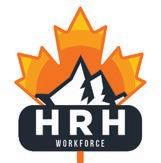
DECEMBER 2022 CANADIAN MINING JOURNAL | 29
RecRuitment of qualified peRsonnel in engineeRing and geosciences www.hrhworkforce.com Canada : +1 (514) 612-7172 South America : + 57 (601) 790-0072 info@hrhworkforce.com Selection of the candidate Professionnal and background checks Recruitment process Language courses Immigration and arrival processes Integration into the company ... And many more services ! contact one of ouR RepResentatives : 100% ownership of KSM, the world’s largest undeveloped gold and copper project that will use green power. TSX: SEA NYSE:SA www.seabridgegold.com info@seabridgegold.com
engineer showing test pads in the outdoor test
CREDIT:
Cummins’
area.
TAMER ELBOKL
Mining in Mozambique
New risks bring new opportunities
During 2022, discussions amongst mining executives have continued to focus on emerging economies. It was in Septem ber of this year that EY Global (Ernst and Young) published an important report: “Top 10 business risks and opportunities for mining and metals in 2023.” Their experts concluded that “ESG still tops the agenda for mining and metals companies, but geopolitical uncertainty, costs and supply chains also demand leaders’ focus.”
Another important research study spells out some of the harsh realities of African mining: the risks and the opportuni ties. “Africa’s mining potential: trends, opportunities, chal lenges, and strategies” was authored by Landry Signé, in collab oration with Chelsea Johnson, for the Morocco-based Policy Center for the New South.
Experts agree that there is vast untapped potential within Africa’s mining sector. But the key trends and drivers are not all helping to reduce the challenges now shaping the continent’s complex economic situation.

It is widely understood that Africa is endowed with abundant mineral resources, including gold, silver, copper, uranium, cobalt, and many other metals which are key inputs to busi nesses around the world. The mining sector contributes a sig nificant share of Africa’s exports, revenue, and GDP annually. In 2019, minerals and fossil fuels accounted for over a third of exports from at least 60% of African countries. Additionally, 42 out of 54 African countries are classified as “resource depen dent,” with 18 countries classified as dependent on non-fuel
minerals; 10 countries classified as depen dent on energy or fuel exports; and the rest being dependent on agricultural exports. Mineral resources contribute a significant amount of fiscal revenues, foreign currency reserves, and employment to a growing number of African economies, driving eco nomic growth and development on the whole continent.
To understand the real-world dynamics awaiting Canadian mining companies active in Africa, consider the saga that is unfolding in Mozambique. The country’s mining sector is seen as a leading pathway to reducing grinding poverty in the long run. The government’s goal in welcoming miners is straightforward: to generate revenues (for both the government and the private sector), which can support infra structure development, local economic development, and maybe even community empowerment.
Over the past decade, mining companies working in Mozam bique have experienced many difficulties, most particularly since 2014 when the global commodity prices went into a tail spin. Among the many critical minerals which are mined in Mozambique, the most interesting for many miners are coal, titanium ores, precious and semi-precious stones, and gold. Coal projects suffered most. At one point, production virtually seized up due to multiple factors: the low prices, combined with the high cost of production in Mozambique; the absence of a reliable infrastructure; foreign exchange problems; and high prices for fuel.
Several non-coal mines are in various stages of development. The improved management of mineral titles, plus improved geodata, are becoming crucial to efforts which aim to move these new developments into production. The goal is to attract a new wave of exploration investment, which the national gov ernment considers to be critical to ensuring continued sector growth and replenishment of stock of available deposits.
The mining sector revitalization started but remains slow, the opening of the Nacala rail line was a big step towards revival of Tete’s coal sector. Mining in Mozambique is starting to get more attention from the national government’s key
30 | CANADIAN MINING JOURNAL www.canadianminingjournal.com
MINING IN AFRICA By Gordon Feller
authorities, particularly because it is seen as a critical source of revenue and employment which help the economy in both the short-run to the medium-run. Mozambique has hundreds of mines, majority of which are small- and medium-scale, which require, but currently lack, supervision and oversight and proper enforcement of regulations. Mining sector employment is about 19,000 in large-scale mining sector and 120,000 in arti sanal and small-scale sector (about 3% of the country’s total “formal” employment).
Artisanal mining (ASM) remains under-producing and prone to illegal activity as well is one of sources of environmental and social impacts in rural and remote areas. There is water and soil degradation, use of harmful chemicals, and use of child labor. By comparison to its neighbours (such as Tanzania or South Africa), where a lot more was done to improve ASM, including allocation of special areas and provision of various services, Mozambique is behind in its ways of handling ASM.
While illegal mining has been criminalized in the Mining Law of 2014, there is no specific training or services to address the underlying problem or to enforce this provision of the law. With poor infrastructure access and remoteness of many of the areas mined (e.g., remote border areas in the provinces of Niassa, Cabo Delgado, and Mahnica), minerals are being smug gled out of the country through neighbouring states. Mozam bique’s government wants to develop more specialized services for ASM sector to improve the quality of these operations given their importance in the areas which otherwise have limited employment opportunities. With the growth of the gold and gemstone sectors, the issue of sharing the areas between largescale and artisanal and small-scale mining will be getting only more pronounced if left unaddressed.
There are many downside risks to the mining sector in Mozambique, and political risk is at the top of that list. The lack of proper infrastructure results in a widespread inability to meet the min ing sector’s basic demands. For exam ple, Brazil’s Vale invested in the development of the Nacala corridor project for transporting coal from the mine to the seaside port of Nacala. The 912-km transport corridor has a transport capacity of 18 million tonnes of coal per year. Mozambique is heavily focused on coal, which makes the country highly susceptible to fluctuations in the price of coal. As a result of the downside risks, in 2021, Vale announced the sale of its Mozambique coal assets to Vulcan. Vale sold the company’s Moatize coal mine and the Nacala logistics corridor for a total of US$270 million.
Because of the inherent risks, in 2018, Mozambique ranked among the bottom 10 in the “Global Mining Investment Attractiveness Index,” as published by Canada’s Fraser Institute. Three years later, in 2021, the country’s position on the list had substantially improved.

According to The High Commission of Canada in Mozambique, in 2021, two-way merchandise trade between Canada and Mozambique totaled $80.5 million, comprising $39.9 million in exports from Canada and $40.6 million in imports from Mozambique.
Mozambique has commercially important deposits of coal (high-quality coking coal and thermal coal), graphite, iron ore, titanium, apatite, marble, bentonite, bauxite, kaolin, copper, gold, rubies, and tantalum.
Mozambique holds some of the world’s largest untapped coal deposits. Vale has made major investments in their coking coal mine. Their first coking coal shipments were in 2011. Opportunities for the provision of coal mining equipment and railway logistics and equipment exist. Given the expectation that mining costs in South Africa will rise considerably over the coming years, Mozambique could gain a regional competitive advantage.
Two large investment projects focused on the mining and processing of heavy sands deposits are moving forward. The Moma heavy sands project (led by Kenmare Resources, of Ireland) and Corridor sands project (owned by BHP Billiton) will require more than US$1 billion in investment. Kenmare owns and operates the Moma titanium minerals mine. Moma is one of the world’s largest titanium minerals deposits, located 160 km from the city of Nampula in Mozambique.
Mozambique’s mineral potential is largely untapped. Gold deposits in Niassa, Tete, and Manica provinces have attracted domestic and international investor interest in recent years. Increased gold mining regulation is leading to larger-scale pro duction, as the government requires miners to formalize their legal status. Considering all of this, Xtract Resources of the U.K. acquired a gold mining concession with estimated reserves of 2.97 million oz. Gold industry production grew 1.1% annually from 2016 to 2020.
Syrah Resources of Australia made its first shipment of graphite from its Balama project in the second half of 2017 and formally inaugurated the project in April 2018. Their Balama project has a production capacity of 350,000 tonnes per annum, which represents a 40% share of the worldwide graphite mar ket. Syrah will export most of this production to the Chinese and U.S. markets.
New Energy Minerals of Australia, formerly known as Mustang Resources, fast-tracked its Caula graphite and vana dium project in northern Mozambique. Valued at approx imately US$44 million, this proj ect is undergoing a definitive feasibility study. Total graphite deposits are estimated at 700,000 tonnes from 5.4 metric tonnes of ore, with an associated vana dium content of the ore estimated at up to 1.02%.
Baobab Resources of Australia is developing a big iron proj ect in Tete province to supply iron and steel for regional infra structure projects.
Gemfields of the U.K. owns a 75% stake in Montepuez Ruby Mining Limitada, which commenced operations in February 2012, and represents a $130 million investment in developing northern Mozambican ruby deposits in a concession area of 2,600 km2. Gemfields estimates that their existing concession contains an estimated 467,000 carats worth of rubies in both primary and secondary mineralization.
In 2018, Fura Gems Inc. of Canada acquired nine ruby assets in northern Mozambique from New Energy Minerals and Regius Resources Group of the U.K. As a result, Fura holds a ruby mining concession area of 1,104 km2 in northern Mozambique. Fura holds effective interests in these projects in the range of 65% to 80% with the remainder held by local part ners. Fura has invested upwards of US$19 million in these proj ects over the following three years in a program of drilling, bulk sampling, and production mining. CMJ
DECEMBER 2022 CANADIAN MINING JOURNAL | 31
Experts agree that there is vast untapped potential within Africa’s mining sector.
By Tamer Elbokl, PhD
Roadmap to net-zero
Canada Nickel is developing the next generation of high-qual ity, high-potential nickel-cobalt projects to deliver the met als needed to power the electric vehicle revolution and feed the growing stainless-steel market. The company pos sesses industry leading nickel expertise and is focused on lowrisk well-established mining jurisdictions. Currently, Canada Nickel is advancing the new Crawford nickel-cobalt sulphide discovery with large scale potential located in the established Timmins mining camp adjacent to major infrastructure. The company owns 100% of Crawford project.
Recently, Canada Nickel launched its wholly owned NetZero Metals to develop zero-carbon production of nickel, cobalt, and iron and applied for the trademarks NetZero Nickel, NetZero Cobalt, and NetZero Iron across several jurisdictions.
Crawford is expected to be one of the largest base metal mines in Canada based on PEA results. A few weeks ago, I met virtually with Mark Selby (MS), founder, chair, and CEO of Canada Nickel to discuss these technologies.
Since 2001, Selby has been recognized as one of the leading authorities on the nickel market. He graduated from Queen’s University with a Bachelor of Commerce (Honours) and has also served on the boards of multiple junior mining companies.

CMJ: To start the conversation, can you tell us your story with Canada Nickel and how you joined the company?
MS: I worked outside mining for almost a decade, then I joined Inco in 2001 as head of commodity research. I have been fol lowing nickel as a commodity for more than 20 years. I was head of strategy in 2005 when we tried to merge Inco and Falconbridge, which unfortunately failed, and I left shortly
after that because it was clear all decision making was going to be made in Brazil and not in Toronto anymore.
I worked for Quadra Mining for a few years, and then I joined some of my colleagues at a company called Royal Nickel Corp. (now Karora Resources) where I led a team that successfully raised over $100 million and advanced the Dumont nickel-co balt project from initial resource to a fully permitted, construc tion ready project. I was there for about nine years. When I left Royal Nickel in July 2019, I got a call from friends claiming they drilled four holes into this place north of Timmins, and they think they made an interesting nickel discovery.
They asked me to join them, and we formed the company. In September 2019, we started drilling the first hole as Canada Nickel. We are closing into three years as a company. And in the meantime, we are on track for completing a feasibility study by year end, and we think we are going to be one of the biggest low-carbon nickel operations globally because of the scale of the nickel resource we have drilled off and the inherent quality of the ultramafic serpentine rocks at Crawford which naturally absorb and sequester carbon (exposing the serpentine rock to air allows this material to absorb CO2 through natural mineral carbonation). Many people talk about zero carbon operations, but in a place like Timmins Ont., where you have access to low-carbon electricity, and significant infrastructure, we think we can deliver NetZero Nickel, NetZero Cobalt, and NetZero Iron from the deposit.
CMJ: Canada Nickel is testing accelerated carbon capture at Crawford, called in-process tailings (IPT) carbonization. Can you explain how it works? Crawford has been called a “net generator of carbon credits”. How does this work?

32 | CANADIAN MINING JOURNAL www.canadianminingjournal.com
MINING
IN CANADA
Exploration infrastructure supporting ongoing exploration and development activities at the Crawford Nickel project. CREDIT: CANADA NICKEL
Interview with Mark Selby, founder, chair, and CEO of Canada Nickel
MS: First, some background on how many companies have approached carbon sequestration. The process that takes place by the ultramafic serpentine rocks is a geological process. In rock in situ, it happens over very long periods of time, and because of that, companies generally looked at what is going to be around for a long period of time: tailings after storing them in the tailings’ facility. So, all the work that we were doing was based on looking at carbon capture in tailings facility after the tailings have been deposited.
We could get to net-zero just with that process, but it takes months and years, so we are trying to find ways to get more air exposed to the tailings because the challenge with picking up CO2 is that the CO2 content of the air is only 400 ppm, i.e., it takes a lot of air and a lot of interaction with rock.
Lab scale tests with our IPT carbonation approach achieved net-zero carbon capture target in < 36 hours and gross carbon capture rates of 26+ tonnes of CO2 per tonne of nickel (5 times necessary for net-zero metal production) in just 6 days (by injecting the tailings with CO2 as they come out of the flotation circuit, and then just letting them sit). IPT carbonation is 8 to 12 times faster than passive approaches, could generate CO2 credits of 710,000 tonnes per annum, and 18 million tonnes over life-of-mine (based on PEA) if process proven at operat ing scale.
We think by using the typical mill processes, we will be able to accelerate that carbonation more than what we have already announced. The big thing is to have as a concentrated source of CO2. In today’s market, people are desperate to find a way to absorb CO2. It can come from downstream processing of our own concentrates. It can also come from hydrogen production. Our company’s view is that hydrogen is going to become the fuel for big captive truck fleets. Having hydrogen production where you are cracking methane is going to create a carbon stream, which we can pull into our plant. Another opportunity is to locate other CO2 generating industries like steel and take advantage of the fact that our tailings can scrub it.
There is a potential for Timmins to become a zero-carbon cluster because of this breakthrough.


CMJ: An electric mining fleet – electric rope shovels and trolley trucks – will go a long way toward reducing carbon emissions. Have you calculated by how much?
MS: Utilization of electric rope shovels and trolley trucks which utilize electricity rather than diesel fuel as a power source wherever possible. In fact, it eliminated over one-third of the diesel consumed when using a typical standard fleet. With large low-grade deposits, we use a lot of electricity and grinding up the rock, and the fact that Ontario has low-carbon electricity available from the grid is a massive advantage. So, those are the two big levers that allow us, even before accounting for the rocks natural ability to absorb CO2, to design a relatively low-carbon mine. In Canada, because we have B.C., Manitoba, Quebec, Ontario, and Newfoundland with their big hydroelec tric facilities, we take for granted that there is low-carbon elec tricity available. But the reality is about half of the regions in the world that have low-cost or low-carbon power are in Canada. It is a great opportunity if we really choose to harness it and take advantage of it.
CMJ: How far from the hydroelectric grid is the mill?
MS: Milling and large-scale processing of lower grade sulphide ores utilizes a significant amount of electricity, and local prox imity to hydroelectricity provides the potential to minimize car bon emissions for this stage of production. The good thing is that it is located literally underneath the infrastructure with multiple power lines running over the property. Unlike some other locations in Canada where you must construct a whole pile of infrastructure to get there, in our case, we need to move some of the infrastructure out of the way. There is a highway in addition to three separate power lines that run over the prop erty or not too far from it.
CMJ: Part of the NetZero aim is to reduce CO2 and SO2 emissions from pyrometallurgical and hydrometallurgical processes when concentrates undergo further processing downstream. If the CO2 is captured by in-process tailings (IPT) carbonatization, will the SO2 be used to produce sulphuric acid or something else?
MS: In the concentrate processing, if we roast the concentrate, we can capture 99.9% of the sulphuric acid. During the pyrome
DECEMBER 2022 CANADIAN MINING JOURNAL | 33 CONTINUED ON PAGE 34
Left: Ongoing exploration activities at Canada Nickel’s Crawford Nickel project. Right: Canada Nickel’s Crawford Nickel project in the heart of the Timmins-Cochrane mining camp. CREDIT: CANADA NICKEL
tallurgical processes such as roasting, sulphation roasting, and reduction using electric arc furnaces (utilizing natural gas rather than coke or coal as a reductant), the off gases are cap tured and re-routed to allow the CO2 to be captured by the waste rock and tailings.
Additionally, the hydrometallurgical processes generate min imal off-gases to produce nickel and cobalt products. The off gases will again be captured and treated to ensure CO2 and SO2 emissions are minimized. Our mill flowsheet uses some acid in it, so it would create a nice, closed loop environment.
CMJ: Do the latest results of the IPT tests continue to be promising?
MS: The first test worked out great. We repeated the test in a sep arate lab under slightly different conditions, and we were able to duplicate the results. We think there is a potential to be able to absorb more carbon faster by pulling a few additional levers which our latest results show 3 times acceleration in carbon cap ture rates. Exact amount and rate at which CO2 can be absorbed from materials mined at Crawford will be analyzed during upcoming phases of work. It is a real change versus what was done before, and we want to test these additional levers, and after the next phase of testing, we will share it globally, because it is a breakthrough for these deposits that are hosted in the same type of rock. I believe that this class of nickel deposits is going to be the source of low-carbon nickel for the next hundred years.
CMJ: Is NetZero a subsidiary of Canada Nickel or a separate entity?
MS: We created a wholly owned subsidiary, NetZero Metals, to begin the research and development of a processing facility that would be in Timmins, Ont. with the goal of utilizing existing tech nologies to produce zero-carbon nickel, cobalt, and iron prod ucts. We also applied for trademarks for the terms NetZero Nickel, NetZero Cobalt, and NetZero Iron in U.S., Canada, and other jurisdictions related to zero-carbon production of nickel, cobalt, and iron products about 18 months ago. Because we were confident that our IPT approach could get us to net-zero, our view was to have NetZero as a standalone downstream entity. Right now, it is a wholly own subsidiary. We are still looking at options in terms of how we structure NetZero and how we can potentially capitalize on net-zero going forward.
Mining is a very capital-intensive business, and we can create more value for shareholders if we can find ways to reduce our cost to capital.
CMJ: Why did Canada Nickel recently acquire 42 km2 of land near Timmins, Ont., for a “zero-carbon industrial cluster?”
MS: There are so many industries that generate CO2, but there are not many companies that can capture it at a high rate in large volumes. That is the real opportunity, and we have 42 km2 of ultramafic rock that we are going to be drilling over the next few years.
From day one when we started the company, we realized that these types of deposits can be identified using geophysics.
Steve Balch, our vice-president of exploration, and I started to look around Timmins to see if we can identify any other ultra mafic rock deposits. Using the provincial geophysical data, we zeroed in on a certain range. We have over a billion tonnes of resources in less than a square kilometer of surface footprint, and we now have additional 42 km2 of footprint, which really speaks to the potential for a very large volume of material.
CMJ: How is Canada Nickel planning to involve the local community? How are you going to benefit from the skill sets of the population in this area of northern Ontario, including First Nations?
MS: The area has a rich mining history and skilled, local work force and proximity to contractors. There are 80,000 people in Timmins, Cochrane, Smooth Rock Falls, and Iroquois Falls and surrounding communities. There is a real opportunity here in Ontario to create zero-carbon industrial cluster.
Very early on, we started working with all the local commu nities and local First Nations to get them engaged, involved, and feel ownership in the project as it moves forward. Canada Nickel aims to sustainably produce the critical minerals needed for a low-carbon future, so we are committed to operating in ways that support resilient local communities and minimize our environmental impacts.
We are also committed to early, ongoing, and accessible engagement that is specifically tailored to the interests and expectations of all project stakeholders, communities, and Indigenous groups. We intend to respond to community con cerns, honestly and transparently, while working to directly optimize potential benefits of our projects. Ongoing dialogue is a key component in ensuring that the Crawford project is con structed in a way that positively contributes to the future suc cesses of its neighbouring communities. Our team will main tain, and seek to continuously improve, ongoing information and participation tools and activities aimed at supporting con structive collaboration throughout the life of the Crawford proj ect. That will certainly pay off in three to five years.
We work to maintain strong communication and collabora tion with Indigenous communities and organizations to estab lish a mutually beneficial and productive relationship charac terized by transparent information sharing, tailored engage ment, and long-term partnerships.
We can maintain this relationship with continuous activities and information sharing, such as communication channels (newsletters, email and telephone correspondence, and site vis its); involving Indigenous communities, organizations, and com panies in project assessments and operations; and finally incor porating the use of Indigenous knowledge in impact assessment (IA) documentation and project planning.
Canada Nickel is always present at community gatherings to answer questions, hear concerns, and discuss the future of the Crawford project with all community members, and we will continue to engage with Indigenous communities and organi zations to ensure that the Crawford project is designed and operated in way that respects their rights, experiences, and connection to their traditional lands.
Finally, we are on track to deliver the feasibility study for Crawford by year-end. The study work is approximately 90% complete, and we are confident in its outcome. CMJ
34 | CANADIAN MINING JOURNAL www.canadianminingjournal.com
MINING IN CANADA
By Josh Swank
Increasing efficiency with support equipment
Support equipment is in the spotlight, and for good rea son. Fine-tuning your fleet means choosing the best of all equipment, not just crushers, screeners, and earth-moving equipment. While those assets are clearly key players, looking at things that may not be top of mind (water tanks, specialty off-highway haul trucks and rear eject material spreaders) can be an effective way to improve productivity.
Examining these aspects of equipment not only makes fiscal sense, but it can also be a determining factor in keeping an operation up and running efficiently and safely.
Water tank technology
How equipment operators haul and apply water can signifi cantly impact an operations bottom line. These water trucks, primarily used for dust control, are designed with several fac tors that affect their efficiency. These factors impact uptime, maintenance, efficiency, and safety.
Traditionally, round water tanks are the most common. They get the job done but not without challenges. The tank’s curved sides raise the water’s center of gravity, making the tank smaller than the truck can handle and the truck less stable when navigating haul roads. To mitigate the instability, opera tors often avoid filling their tanks completely. This means they need to refill more frequently, thus contributing to added downtime and increased fuel consumption as they backtrack to the water source.
Alternatively, water tanks with square corners minimize churning and often have a larger capacity by simply not round ing off the sides of the tank. They also maximize productivity and operator safety due to their box-shaped structure, water baffles and water metering systems. The design also lowers the unit’s overall center of gravity, enhancing stability and allow ing drivers to safely fill the tank to capacity. The box-shaped structure hauls about 20% more water than rounded tanks, resulting in time and cost savings.
To minimize surging, some tanks feature sophisticated water control systems that use baffling running from floor to ceiling as well as along the complete length and width of the tank, result ing in full compartmentalization of the water. Almost all water tanks feature baffles, but many have large holes cut out to pro vide maintenance personnel access to the individual compart ments. Within the outer compartments, some manufacturers install side-surge stabilizers along the walls to prevent water from rolling or churning. The number of compartments can vary between tanks. For instance, a 221,447 litre tank might have 42 or more individual compartments.
To offer the best level of water compartmentalization, these baffles require holes to allow water to flow freely throughout the tank, but they need to be small enough to prevent water from surging during use. To address this, some water tanks fea
ture access doors that are about as tall as an average-sized worker to provide a more advanced solution than simply a hole near the ground in the baffle walls. These baffle doors, which technicians walk through easily, practically eliminate the need to crouch down while they maintain the tank, and the doors remain shut while the water tank is in operation, further restricting water movement between compartments.
To allow technicians into the tank for maintenance, some manufacturers incorporate external doors, which can provide fresh air and natural light throughout the tank after opening all the external and baffle doors. When the tank is empty and the inside needs servicing, technicians simply enter the tank and open the baffle doors. This system offers easy service and maintenance, allowing technicians to access the inside of the tank safely and easily.
Having complete and easy control over their tank’s water output gives truck drivers control over their safety on haul roads. For instance, individually controlled spray heads help water truck drivers optimize their water usage as well as mini mize the chance of oversaturating haul roads, which can create slick driving conditions.
Overburden body design
On the surface, it may appear as though truck bodies do not deviate much from one design to another, but each truck’s design is created with safety and efficiency in mind. New truck body designs being used to move overburden within mines now address two major concerns that miners expressed. First, the designs have virtually eliminated the loafing effect. Second, they minimize material carryback, ensuring the bulk of the load is dumped the first time for greater efficiency.
With a significant amount of load over the rear axle, the dumping motion of a truck body not professionally designed to combat material loafing oftentimes causes the front of the truck to lift off the ground. The entire weight then releases at once, slamming the truck and its driver back to the ground. This pro

DECEMBER 2022 CANADIAN MINING JOURNAL | 35
EQUIPMENT
The box-shaped structure of some water tanks makes it possible to haul more water than rounded tanks. CREDIT: PHILIPPI-HAGENBUCH
CONTINUED ON PAGE 36
Why three support equipment pieces are in the spotlight
EQUIPMENT

cess stresses both the truck chassis and the driver.
Several modifications now move truck bodies from standard dumps to proficient machines. First, the shape of the truck bed has been redesigned. Traditional truck beds are parallel-sided, forming a chute for the material to release all at once without breaking up. This often causes the truck to rock with the sud den weight on the rear of the bed. By tapering the sides of the truck and making the end of the truck bed wider than the front, the overburden and other materials are given an opportunity to spread out while exiting the truck body.
Material is further broken up by angling the back third of the body floor down and raking the edge of the floor away from the center point. By taking the floor away from the underside of the loaf, it is forced to break apart and exit the truck body with less force on not only the truck chassis, but the driver, who is not jolted as greatly within the cab.
Additionally, many materials, when transported in truck beds, adhere to the truck’s surface and fail to release when dumped, so it takes a joyride back at the expense of the company. As much as 30% of a truck body’s volumetric capacity can stay behind through added carryback, making for a significant decrease in productivity.
The answer to carryback problems lies in both the design of the truck body and the materials used within and outside of the body itself. Coating key parts of the truck body underside with hydrophobic paint will produce what is known as the “lotus effect.” Moisture within the haul material prevents it from sticking to the hydrophobic surface, like the water-repelling
characteristic of a lotus leaf. As a result, it is impossible for any thing to remain on the truck. Comparable results can be achieved within the body when strategically using hydrophobic and oleophobic steel liners to minimize material carryback.


Material spreaders on rear-eject bodies
Spreading materials may seem like a simple concept, but it is one that involves a great deal of variability and potential for lost efficiency. Material spreaders can be used to build haul roads, for road safety in the winter by spreading sand or gravel across slick and icy roads, and in other areas that require dry, solid materials to be discharged and broadcast.
Typical material spreaders operate in a passive mode by using steep slopes to move the material from the body to the material spinners. This results in unsafely raising the vertical center of gravity. Even though the units have vibratory devices on them, the material still tends to bridge, adversely affecting the operation of the equipment. There are also safety concerns when crew members must manually address the material clog ging up within the highly sloped bodies, often requiring them to get into tight, confined spaces.
An updated option involves an active system, which uses a rear-eject body that horizontally pushes material towards the back of the bed and into a cross auger that delivers the material to broadcast spinners. CMJ

36 www.canadianminingjournal.com
MINING EVOLVES IN REAL TIME REQUEST YOUR FREE SUBSCRIPTION canadianminingjournal.com/subscribe KEEP UP WITH THE REQUEST YOUR FREE SUBSCRIPTION canadianminingjournal.com/subscribe
MINING IN CANADA
Strong team: successful project
Keeping all teams fully integrated throughout the mining project
Canada has a long-standing history in natural resource dis covery and development, yet when new mining projects are built, we often hear of schedule or cost overruns, sometimes both. We know things can go wrong on any project – Covid-19 and supply chain issues are a timely example. However, min ing projects are complex and to prepare for these external and unforeseen challenges, and developers must get the team fun damentals right to set the project up for success.
Let us look at some case studies where things have not gone to plan, identify the causes for these mishaps, and identify prac tices that should help prevent similar issues from occurring.
Case study 1 – A classic for project engineering and permit ting: While the permitting and approvals team prepares the environmental and social impact assessment (ESIA) and subse quent environmental permits for approval, the engineering team makes changes to the project design to improve project economics. Without good team communication, this can lead to a permitted project that is different from the engineered proj ect. To correct this, the ESIA and permitting documents will need to be revised, which can be time-consuming and lead to loss of trust with stakeholders as the previously discussed proj ect is now changing.
Case study 2 – Unclear Commitments: The ESIA prepared for the project included a multitude of commitments made by var ious environmental disciplines that, once tabulated by the con struction environmental team, were ambiguous and restrictive that the project was not operable. That led to a lengthy re-nego tiation process with the environmental regulators.
porate the following guiding principles:
By Stephan Theben
The environmental planning of a project overlaps with the overall project life cycle. Environmental and social commit ments for a project stay with it for a long time. Negotiating changes is difficult and lengthy.
To avoid significant project changes, planning should incor
1 Be on the same page: Project design will evolve during the various study phases; however, the owners, engineering, and environmental teams need to have the same understanding and expectations on key issues and commitments.
2 Integration: Project design integrates economic and engi neering drivers and balances them with environmental and social drivers.
3 Clear commitments: Environmental practitioners must integrate with construction and operations experts on the team to make sure that mitigation measures are executable without excessively limiting the project’s ability to perform.
What steps can then be taken to help keep the project moving forward?
> Be stable and have the right qualifications: Maintain con sistency in the project team. Having someone on the team who knows why the commitment was made, when, and by whom, can be helpful. The team should also have the right expertise for the project so that the right decisions can be made based on the best information available.
> Get to know each other: Regular calls and in person meet ings to stay in touch. Communication is key. Weekly calls amongst team leaders seem to work well. Experts can be brought in to discuss specific issues. Having all teams physically in the same location makes integration easier.
> Balance project drivers and focus on the key issues: It is easy to get distracted and drag the project into all kinds of rab bit holes. Mining projects are always complex, and they cer tainly affect all environmental disciplines. Focusing on key issues will save time and money.
> Make clear, realistic commitments: Gratuitous commit ments in the ESIA can have long-lasting, time-, and money-con suming consequences. There is also pressure to get the ESIA approved in a timely manner, so each commitment made to regulators, or any other stakeholders needs to be checked to be practicable, adequate, and cost-effective.
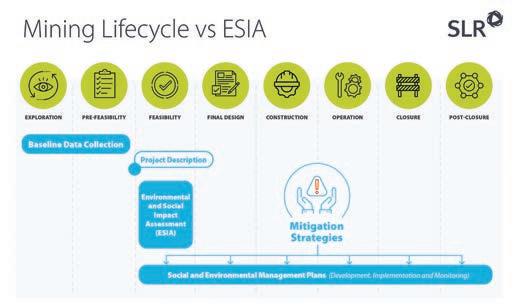
Commitments for mitigation and monitoring need to be reviewed to allow full appreciation of the associated cost and effort throughout the project life cycle.
Applying these measures, the project will be steered towards a balanced scenario that will have minimal cost impacts and garner solid returns, keep stakeholders engaged and support ive of the project, and provide the team with a thorough under standing of site conditions during construction. It will also ensure that the environmental and social monitoring is inte grated with project design, allowing for expansion and contin gencies as needed. CMJ
Theben is mining and minerals sector leader at SLR Consulting.
DECEMBER 2022 CANADIAN MINING JOURNAL | 37
Stephan
The overlap of the mining life cycle and ESIA. CREDIT: SLR CONSULTING
By Tamer Elbokl, PhD
Seabridge Gold
A Canadian icon of responsible operations
Seabridge Gold holds a 100% interest in several North Amer ican gold projects. The com pany’s principal assets are the KSM and Iskut projects, located near Stewart, B.C., and the Coura geous Lake gold project located in the Northwest Territories. Other core assets owned by the company are Snowstorm in Nevada, which is a 103 km2 property located at the intersection of three major Nevada gold belts, and 3 Aces in Yukon, which is a 314 km2 property with year-round access. Addition ally, Seabridge retains an interest in non-core assets from which it expects to generate approximately US$30 million in cash over the next several years such as Quartz Mountain and Grassy Mountain projects in Oregon.
An essential part of Seabridge’s business strategy is being a responsible and welcome member of the communities in which it operates. KSM project has been the primary example of this philosophy in action through the environmental assessment (EA) process in both B.C. and elsewhere in Canada. The com pany has worked hard to earn trust from community members near the KSM project for over 10 years, which resulted in the company being tagged as a “responsible operator.”
On June 28, 2022, Seabridge announced the results of an updated preliminary feasibility study (PFS) for its 100% owned KSM project located in northern B.C. The 2022 PFS shows a considerably more sustainable and profitable mining operation than its 2016 predecessor, now consisting of an all open pit mine plan that includes the Mitchell, East Mitchell,


> Seabridge Gold is ranked among the world’s top 10 companies in gold reserves.
> It has two PFSstage projects (KSM & Courageous Lake) with a combined 45 million oz. of gold reserves.
> KSM has 19.4 billion Ib. of permitted, measured, and indicated copper resources.
> Seabridge has more copper per share than any copper company.
and Sulphurets deposits only. Recently, I caught up with Rudi Fronk (RF), Seabridge chairman and CEO. Fronk started our interview by assert ing that Seabridge is pursuing three value-enhancing strate gies. First, the search for gold projects in North America which would be accretive in terms of gold resources. Second, funding exploration and engi neering work likely to expand resources and upgrade them to reserves. Third, Seabridge sells or partners its projects when they reach the production stage to limit risk and share dilution.
Normally, I would start an interview with the CEO of Seabridge by asking questions about KSM project; however, in this article, I would like to start by highlighting the recent rec ognition of Seabridge Gold for outstanding achievement in leg acy mine reclamation.
CMJ: Seabridge was recently awarded the 2022 Jake McDonald Annual Mine Reclamation Award presented by the British Columbia Technical and Research Committee on Reclamation (TRCR) to recognize outstanding achievement in mine reclamation in B.C. Can you talk to us about the award and why Seabridge deserved it?
RF: The award recognizes outstanding achievement in mine rec lamation in B.C. and is presented annually by the B.C. TRCR. It
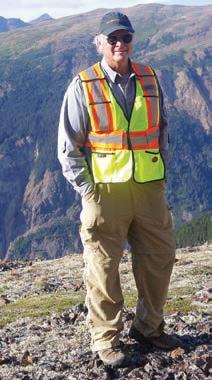
38 | CANADIAN MINING JOURNAL www.canadianminingjournal.com
MINING IN NORTH AMERICA
Above left: Iskut project. CREDIT: SEABRIDGE GOLD Above right: 3 Aces project. CREDIT: SEABRIDGE GOLD
Rudi Fronk, chairman and CEO of Seabridge Gold.
recognizes the multi-year, $12 million environmental and recla mation activities Seabridge Gold is voluntarily undertaking with the Tahltan nation at our 100% owned Iskut project, located in the transboundary region of northwest B.C., bordering southeast Alaska. The $12 million program is reclaiming the historical leg acy of the former Johnny Mountain mine, which was operated by a previous owner in the late 1980s. Our program is designed to bring the site back to its pre-mining conditions.
As for deserving this award, we thank the committee for this honour. I believe the award recognizes the fact that Seabridge prioritizes protecting the environment at its project sites and its relationships with local Indigenous communities. Seabridge is one of very few companies within Canada that knowingly and voluntarily decided to deal with the liability associated with an abandoned and un-reclaimed mine which was not generated by our activities. Simply put, we are doing the reclamation work because it is the right thing to do.
CMJ: Seabridge has a reputation as a “responsible operator.” Is this reputation also enhanced by the fact that you are committed to working with Indigenous communities such as the Tahltan nation?

RF: Absolutely! We pride ourselves on the fact that we strive to develop respectful and constructive relationships with all the local Indigenous groups associated with each of our proj ects. This means that we listen carefully and are willing to adjust or redesign our project activities and design to address or mitigate local concerns. Our relationship with both the Tahltan and Nisga’a nations in B.C. are testaments to our com mitment to “try and do it right.” Another example is our recent work with the Liard First nation at our 3 Aces project in Yukon, where we worked closely with them to address their concerns regarding our application for a new class 4 quartz mining permit.
CMJ: Based on your experience, what are the benefits of working with First nations?
RF: I can state with certainty that our relationships have resulted in many benefits both on the personal and the profes sional levels. Many of our staff have developed long lasting friendships, especially as we have developed the KSM project over the past 14 years, which has assisted in developing respectful relationships. Additionally, working constructively with the First nation’s has resulted in their support for our var ious projects such as the signed benefit agreements we have with the Nisga’a and the Tahltan nations at our KSM project and our signed co-operation agreement with the Liard First nation at our 3 Aces project. This mutual respect does not mean that we agree all the time, but that when we do disagree, we can have constructive dialogue to overcome the disagreement and find a solution.
RF: We saw the opportunity to acquire a large land package, that already hosted a mineral resource, with very similar geo logic characteristics to our nearby KSM project. When we pur chased KSM in 2000, the project hosted two small gold-copper deposits. KSM has now become the world’s largest undeveloped gold-copper project. We are now focusing our exploration at Iskut on gold-copper exploration targets. We just completed a drill program beneath the Bronson Slope resource and expect to announce the results prior to year end.
Additionally, with the acceptance of the liability associated with the former Johnny Mountain mine, we saw an opportunity to further strengthen our credentials as a “responsible opera tor/developer,” especially as we continue to advance the KSM project.
CMJ: Now that you mentioned KSM project, why did Seabridge need an updated PFS? What are the primary reasons for the improvements in the plan?
RF: The 2016 PFS was completed prior to our acquisition of the East Mitchell (formerly known as Snowfield) deposit from Pretium in December 2020. The addition of East Mitchell allowed us to simplify the mine plan, incorporate metal price and currency exchange rate changes since 2016 as well as the impact of inflation.
CMJ: Was it prepared by the same company?
RF: Yes. The 2022 PFS was prepared by Tetra Tech, which is the firm that had also authored the 2016 PFS. The 2022 PFS results propose mining only 25% of the KSM resource inventory and do not include material from the copper-rich Kerr and Iron Cap deposits that will require underground block caves for develop ment. An analysis of a stand-alone development of these depos its was included as a preliminary economic assessment (PEA) forming a separate part of the NI 43-101 technical report that was filed in August.
CMJ: What are the major improvements in the base case 2022 PFS compared to the Base Case 2016 PFS?
CMJ: Seabridge Gold purchased SnipGold Corp. and its mineral tenures, including the former Johnny Mountain mine, so you took over other companies existing reclamation liabilities before you even start drilling. Why is this considered an opportunity for Seabridge?
RF: The improvements were plentiful. Design improvements over the 2016 PFS include a smaller environmental footprint, reduced waste rock production, reduced greenhouse gas (GHG) emissions by the electrification of the mine haul fleet, a 50% increase in mill throughput, and the elimination of capital-in tensive block cave mining. Some highlights also include the fol lowing:
DECEMBER 2022 CANADIAN MINING JOURNAL | 39 CONTINUED ON PAGE 40
Seabridge Gold announced the launch of a new and improved KSM project website at https://ksmproject.com
> Proven and probable gold reserves increased 22%, to 47.3 million oz., due to higher gold grades added from East Mitchell.
> Mill throughput was expanded from 130,000 t/d to 195,000 t/d.
> Average annual gold production increased by 90% and is now estimated at just over 1.0 million oz./y over a projected 33-year mine life.
> Although the initial capital increased from US$5.0 billion to US$6.4 billion mostly due to inflation, the total life of mine capital was reduced by about US$900 million due to the elim ination of block cave mining from the mine plan.
> The total after tax net cash flow increased from US$10.0 bil lion to US$23.9 billion.
> After tax NPV increased 5% from US$1.5 billion to US$7.9 billion.
> After tax IRR increased from 8.0% to 16.1%.
> The payback period dropped from 6.8 years to 3.7 years.
We have redesigned KSM for an inflationary environment. The themes for the 2022 PFS are capital and energy efficiency. The mine plan is simplified to bring total capital down below 2016 estimates despite inflation by reducing sustaining capital. We have accomplished this by eliminating underground block cave mine development which is deferred to future years. Important steps have also been taken to make the project less dependent on oil, especially diesel fuel, by maximizing the use of low cost, green hydroelectric energy.
CMJ: Did the increase in ore delivery to the mill from an initial 130,000 t/d to 195,000 t/d in year 3 result from the acquisition of the East Mitchell open pit resource?
RF: Yes. In the 2016 PFS, daily ore throughput was constrained by limitations of production from underground block cave min ing. By going to an all open pit mine plan where we can mine ore from Mitchell and East Mitchell at the same time, we increased the throughput. This also reduced the mine life from 52 years to 33 years.
CMJ: In August 2022, Seabridge Gold announced the results of a preliminary economic assessment (PEA) study for a potential copper-rich underground mine at KSM. Why was the recent PEA based on Kerr and Iron Cap deposits not included in the updated PFS?
RF: Although we have 11 billion tonnes of economic resources at KSM, we have always limited our total ore production in our PFS mine plans to the 2.3 billion tonnes of tailings capacity we have permitted. Ore production in the 2022 PFS fills this space. By including a PEA, we were able to show additional produc tion potential beyond the permitted 2.3 billion tonnes of tailings space, focusing on the higher copper grade, block cavable deposits at Kerr and Iron Cap. This added the potential of an additional 39 years of very profitable mine life on top of the 33 years we have in the 2022 PFS.
CMJ: Seabridge Gold received class 4 exploration permit for the 3 Aces project drilling at the Hearts zone. Did you have to work with First nations to obtain the permit, can you talk to
us about the agreement you signed recently with Liard First nation?
RF: Absolutely! We worked very closely with both the Liard and Ross River’s First nations during the renewal process of our exploration permit. Our recent agreement with the Liard First nation focused on how we will work with each other as we explore the 3 Aces project. The agreement specified our commitments to the Liard First nation on how we would address their concerns with respect to wildlife management, land access, long term cumulative effects, and for ongoing and respectful engagement.
CMJ: Recently, Seabridge Gold completed drilling at the Snowstorm project in northern Nevada. What is the plan/ outlook for this project?
RF: We still believe that Snowstorm has tremendous potential. We are in the process of planning exploration programs for 2023, not only at Snowstorm, but also at Iskut and 3 Aces where 2022 exploration programs are winding down. The size and extent of our 2023 exploration programs will be based on where we believe we have the best opportunity to add ounces and value to our shareholders.
CMJ: Courageous Lake is one of Canada’s largest undeveloped gold projects, and the project’s first PFS was released in July 2012. Do you have any updates on this project; are you expecting a joint venture or an acquisition soon?
RF: We are currently looking at the best path forward for Courageous Lake. The 2012 PFS showed a project that was mar ginal, mostly due to the Canadian dollar being at par to the U.S. dollar at that time. At today’s exchange rate and higher gold price, the project looks far more attractive. We have also com pleted internal studies looking at perhaps a smaller starter proj ect that reduces initial capital and improves economics. Our goal is to find the best path forward for Courageous Lake that will generate the best value for our shareholders. An updated PFS may be the answer.
CMJ: You have over 40 years of experience in the gold business, mostly as a senior officer and director. You co-founded Seabridge and have served as the company’s CEO since 1999. When you look back at your journey with Seabridge Gold, is there anything you would have done differently?
RF: I need to update that number! It is now 42 years! Looking back, I am proud of what we have accomplished at Seabridge. Our goal from the beginning was to create the industry’s best leverage play to a rising gold price. Our discipline of growing ounces in the ground faster than shares outstanding has pro vided our shareholders with outsized returns over the long haul compared to the gold price and to other gold equities. I am often amazed looking back that we have built this significant reserve and resource base over the past 23 years and only have 80 million shares outstanding. To be honest, I would not have changed anything! CMJ
40 | CANADIAN MINING JOURNAL www.canadianminingjournal.com
MINING IN NORTH AMERICA
ON THE MOVE
Executive, Management and Board Changes in Canada’s Mining Sector
TOP MOVES IN THIS ISSUE
Great Panther Mining appointed Sandra Daycock president and CEO replacing Alan Hair who becomes again non-executive chair of the board. She brings over 20 years of finance management and capital markets experience. She joined Great Panther in 2021 as VP finance and treasury. Daycock is a Certified Professional Accountant (CPACMA B.C.), and she holds a bachelor of arts (Honours) and master of arts in economics, both from University of Manitoba.
Victoria Gold named Timothy Fisch VP and GM for the Eagle gold mine. He is an experienced metallurgist in process operations. He has held senior positions with Corona’s Mascot mine, BHP Nevada’s Robinson project and Unimin’s Blue Mountain project. Fisch previously held the title of GM for Imperial Metals’ Mount Polley and Red Chris mines and Bethlehem Copper in 1978. Most recently he was a member of the project team for Coeur Mining’s Silvertip expansion project.
Paul Andre, president and CEO at Workplace Safety North, accepted the platinum Canada Award for Excellence from Excellence Canada, a national authority established by Industry Canada. The award recognizes outstanding achievements by organizations in the private, public, and not-for-profit sectors, from coast to coast. Andre thanked his staff for their dedication to heath and safety that led to the award. The WSN health and safety training centre in Sudbury is mine rescue headquarters for Ontario.
BUCKLAND
M: +1 416.854.8468
E: erik.buckland@lincolnstrategic.com



W: www.lincolnstrategic.com
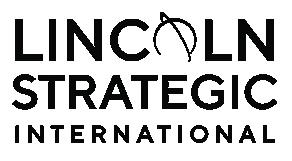
MANAGEMENT MOVES
» The new president and CEO of Alliance Magnesium is Francois Perras
» Angel Wing Metals new CFO is Remantra Sheopaul
» ArcelorMittal appointed Stephane Brochu VP and CEO of the company’s Long Products Canada division.
» Argo Gold expanded its team with James Bell as VP business development and Zubin Sethna as chief investment officer.
» Facundo Cazares is now VP exploration at Bendito Resources
» Blue Thunder named Dorian L. Nicolas as CEO.
» Bonterra Resources named Pier-Elise Hebert-Tremblay
» Burin Gold named Tom Panoulias interim CEO.
» Kevin Chen has been appointed CFO at Cassiar Gold
» Copper Lake Resources named David McDonald its CFO.
» The new CFO of Copper Mountain Mining is Letitia Wong
» Anglo American named Al Cook as CEO of De Beers Group when Bruce Cleaver becomes co-chair of the group early next year.
» Errol Farr replaced Philip Gibbs as CFO at Enerev5 Metals
» Forum Exergy Metals welcomed Rebecca Hunter as senior geologist.

» Torben Michalsen is joining G2 Goldfields as COO.
» Giyani Metals said Robin Birchall resigned his post as CEO.
» Gossan Resources appointed Robert Suttie as CFO, effective Jan. 1.
» Hudbay Minerals named Eugene Lei its new SVP and CFO and Mark Gupta as VP corporate development.
» The new senior geologist at Kraken Energy is Madeline
» The new CFO of Laurion Mineral Exploration is Tyler Dilney
» Libero Copper and Gold appointed Sunil Sharma as CFO and Michelle Borromeo as VP investor relations.
» Jason Attew is now the president and CEO of Liberty Gold
» Madison Metals appointed Ryan Thompson as chief strategy officer.
» Craig Hairfield has resigned as CEO at Mantaro Precious Metals.
» Peter Damone is the new president, CEO and secretary of Mason Graphite
» Medallion Resources appointed Alfredo Ramos Plasencia its new president, CEO and director, and Kurt Forrester its chief technology officer.
» Osisko Development appointed Laurence Farmer to investor relations on an interim basis.
Outcrop Silver and Gold appointed Sunil Sharma as CFO.
» The new CFO of Resouro Gold is Sandra Evans, who succeeds William Tsang
» Rock Tech Lithium named Sonja Rossteusch its CFO, replacing Stephan Krause who remains chair of the board.
» Sabre Gold Mines named Andrew Elinesky as CEO.
» Christopher Buchanan is the new VP exploration at Soma Gold

» StraightUp Resources named Mark Brezer CEO and Matthew Markin CFO. Daniel Cruz will remain a director.
» Tembo Gold named Hendrik Meiring as exploration manager at the Tembo project.
» Marcus Brewster named COO at TriStar Gold to oversee Castelo de Sonhos.
» The new VP exploration at TRU Precious Metals is Paul Teniere
» The new president and CEO of York Harbour Metals is Bruce Durham.


NOVEMBER 202 2 | VOLUME 3 | ISSUE 11
SPONSORED BY ERIK
Client Director Global Mining Recruitment
Tim Fisch
Sandra Daycock
Paul Andre
DECEMBER 2022 CANADIAN MINING JOURNAL | 41
BOARD ANNOUNCEMENTS
» Karina Rogers joined the board of Adventus Mining

» American Future Fuel added Patrick Morris
» Peru-based Carsten Korch has joined the board of American Lithium
» Aris Mining added Monica de Greiff
» Bendito Resources has added Steve Filipovic to its board.
» Cabral Gold appointed Sami Arap Sobrinho a director.
» Mark Mukhija joined the board of Clear Sky Lithium.
» EDM Resources appointed Rajesh Sharma

» Jonathan Henry named executive chair of Giyani Metals, and Stephanie Hart lead independent director.
» GoldHaven Resources named Bertram T. von Plettenberg to the board.
» Goldrea Resources director David Robinson has resigned.
» Gilbert Lawson resigned his seat at Gowest Gold to take up the role of interim GM at Kinross’ Tasiast mine.
» Effective immediately, Cameron Wickham and Paul Manias have taken seats on the Highvista Gold board.
» The International Copper Association elected Shehlzad Bharmal of Teck Resources its chair of the board.
» Chris Irwin took a seat on the board of Northern Sphere Mining
» The latest addition to the board of Premium Nickel Resources is Don Newberry
» Silvercorp Metals added Ken Robertson to its board.
» Gary Prihar has joined the board of Silverton Metals
» SolGold seated Scott Caldwell and Dan Vujcic on its board following their nominations by Cornerstone Capital
» Brent Bergeron and Garnet Dawson joined the board of Spanish Mountain Gold.
» Peter Mah and Richard Orazietti joined the board of Spanish Mountain Gold. Most recently, Mah was COO at McEwen Mining


» Tactical Resources asked Mark Mukhija to take a seat on the board.
» Gerry White has been named an independent director of Trojan Gold.
» Michael Williams has taken a seat as chair of the board at York Harbour Metals
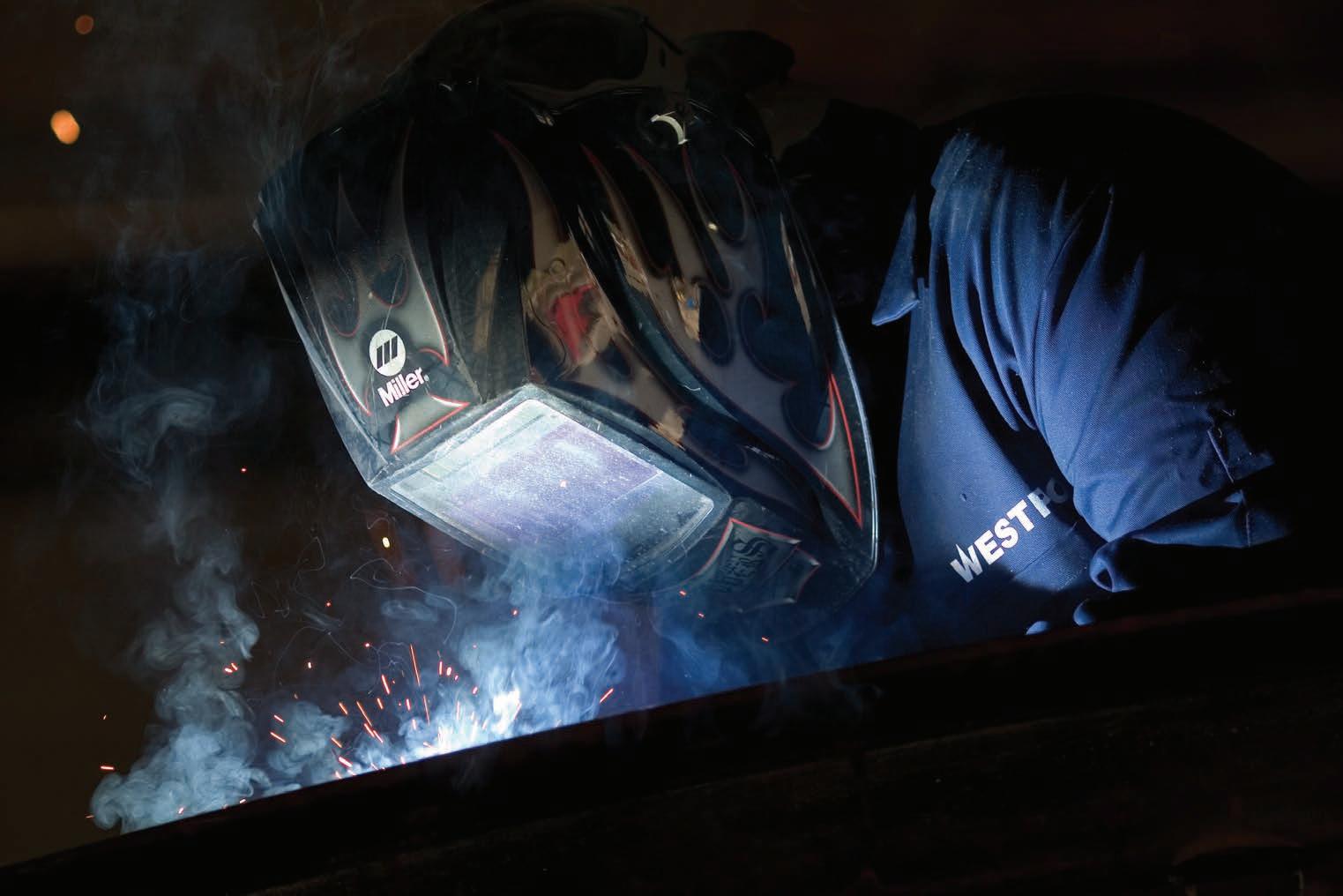
ADVERTISERS INDEX AMC Consultants 42 www.amcconsultants.com Canada Nickel 19 www.canadanickel.com Caterpillar ................. 5 ....... www.cat.com/underground Conspec Controls 9 www.conspec-controls.com BUSINESS DIRECTORY WORK PLATFORMS TO SAFELY ACCESS YOUR EQUIPMENT www.scissordeck.com | scissordeck@shaw.ca 877-730-2704
42 | CANADIAN MINING JOURNAL www.canadianminingjournal.com 1,800+ CLIENTS | 8,000+ PROJECTS 38+ YEARS’ EXPERIENCE Corporate Consultancy Geotechnical Engineering Geology Mining Engineering amcconsultants.com 1,800+ CLIENTS | 8,000+ PROJECTS 38+ YEARS’ EXPERIENCE Corporate Consultancy Geotechnical Engineering Geology Mining Engineering amcconsultants.com 1,800+ CLIENTS | 8,000+ PROJECTS 38+ YEARS’ EXPERIENCE Corporate Consultancy Geotechnical Engineering Geology Mining Engineering amcconsultants.com 1,800+ CLIENTS | 8,000+ PROJECTS 38+ YEARS’ EXPERIENCE Corporate Consultancy Geotechnical Engineering Geology Mining Engineering amcconsultants.com CONTACT: Robert Seagraves 416-510-6891 or 1-888-502-3456 ext. 2 rseagraves@canadianminingjournal.com WITH A LISTING IN THE BUSINESS DIRECTORY FOR AS LITTLE AS $250.00 PER ISSUE grow your business

WEEKLY REPORT Email Newsletter for Mining Professionals Join thousands of high-performing mining professionals already receiving The Northern Miner’s free Weekly Report update. SUBSCRIBE FOR FREE northernminer.com/weekly-report
New
Leave your paw print and enjoy the smooth, efficient ride.

Explore the new Leopard DI650i: ROCKTECHNOLOGY.SANDVIK/DI650 i LEOPARD™ DI650i TIME FOR A NEW LEADER
Leopard DI650i down-the-hole surface drill rig offers long-term productivity and superior stability with robust and reliable main components – seamlessly integrated with state-of-the-art technical solutions. Scalable automation, easy maintenance and outstanding movability are the features that make Leopard DI650i a premium product, which is an honour to own.































































































































